SPRING | 2024

Interaction + Infrastructure = Innovations in Healthy Aging
Salk mourns the loss of Nobel Laureate Roger Guillemin IN MEMORIAM
28
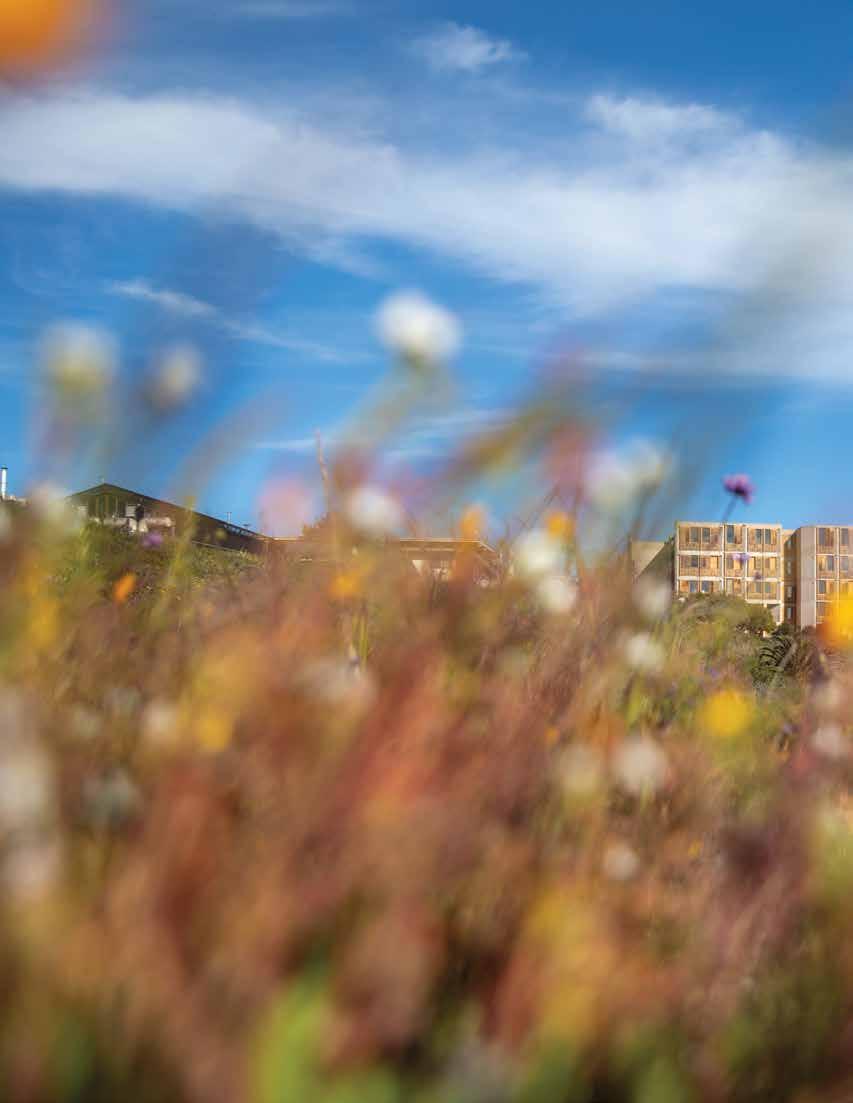
OBSERVATIONS
Daniel Hollern— Turning a cancer diagnosis into a career in basic research
32
INSIGHTS
Jerry Sheehan— Collaborating shoulder to shoulder with scientists
34
NEXT GEN
Laura Mainz— Taking control after a cancer diagnosis
ON THE COVER:
Rather than working in siloes to investigate the many individual genetic, molecular, and environmental factors that determine how a person ages, Salk researchers take a more collaborative and comprehensive view. Read more on page 12.
Black Association affinity group cultivates welcoming environment 36
CONTENTS 02 IN THE NEWS 04 DISCOVERIES 38 SPOTLIGHT FRONTIERS
12 BELONGING
22
Dear Friends,
We’ve declared 2024 to be Salk’s “Year of Healthy Aging.” I’m excited about it because I see this research area as both a strength for the Institute as well as a focus filled with new possibilities for interdisciplinary growth and discovery. Healthy Aging is also one of the six scientific initiatives within Salk’s Campaign for Discovery, our seven-year, $750 million fundraising effort.
Historically, aging research has been approached with tunnel vision, with each scientific discipline studying the issue in a silo. Geneticists might pursue the linkage of genes and mutations to aging, while biochemists might point to the deleterious effects of misfolded proteins, and metabolic researchers might regard oxidative damage as the key. Meanwhile, the many health conditions for which aging is a major risk factor— heart disease, neurodegenerative diseases, cancer—are each treated separately in the clinical setting.
We view things differently here at Salk. Because innovation often emerges at the intersection of scientific disciplines, Salk brings together all-star teams of experts from different research areas to form collaborative groups that tackle common problems, including aging. I’m grateful to the many experts at the Institute who contribute to this important work. We’re already seeing the fruits of their efforts in identifying multifactorial contributors to healthy aging, some of which you will read about in these pages.
In this issue of Inside Salk, we also honor the life of Distinguished Professor Emeritus and Nobel Laureate Roger Guillemin. Assistant Professor Daniel Hollern shares his path from childhood kitchen concoctions to cancer biology; new Chief Information Officer Jerry Sheehan discusses his unique approach to working shoulder to shoulder with research scientists; Postdoctoral Researcher Laura Mainz, German native turned Californian, reflects on how her father’s cancer diagnosis continues to inspire her research in cancer and cell death; and you will learn how the Black Association at Salk affinity group is helping to broaden opportunities for mentorship, professional development, and academic support.
In closing, I’m confident we will achieve great success in healthy aging research and beyond in the coming year. As ever, thank you for your dedication and contributions to Salk science.
Warmest regards,
Gerald Joyce Salk Institute President

“We view things differently here at Salk. Because innovation often emerges at the intersection of scientific disciplines, Salk brings together all-star teams of experts from different research areas to form collaborative groups that tackle common problems, including aging.”
PRESIDENT’S LETTER WWW.SALK.EDU 1 INSIDE SALK SPRING 2024
Jan Karlseder Professor
named Salk’s Chief Science Officer

On February 1, Jan Karlseder started as Salk’s new senior vice president and chief science officer (CSO). A professor in Salk’s Molecular and Cell Biology Laboratory, director of the Paul F. Glenn Center for Biology of Aging Research, and Donald and Darlene Shiley Chair for Research on Aging, his selection came as the result of a competitive, international search led by an executive recruitment firm and internal search committee, which evaluated a large pool of highly qualified candidates over 10 months.
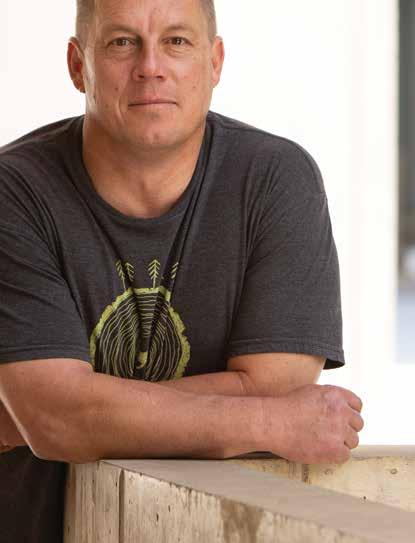
Karlseder will maintain his faculty position and lab, while working with Salk President Gerald Joyce to develop and implement the Institute’s overall scientific strategy, as well as oversee research operations in support of this strategy, including the grants development, scientific core facilities, and animal resources teams. Karlseder succeeds Professor Greg Lemke, who had served as CSO since April 2023.
“The CSO plays a critical role in supporting the faculty, elevating our research, and identifying new opportunities for partnerships and research funding,” Salk President Gerald Joyce says. “We had a long list of qualities we sought in a CSO and Jan fulfills them all—he is an internationally recognized scientist, admired leader, and excellent communicator, and he has experience in philanthropy. We are grateful to Jan for accepting this role, and I’m excited to see what we’ll accomplish together.”


IN THE NEWS
2 INSIDE SALK SPRING 2024 WWW.SALK.EDU
“We had a long list of qualities we sought in a CSO and Jan fulfills them all—he is an internationally recognized scientist, admired leader, and excellent communicator, and he has experience in philanthropy. We are grateful to Jan for accepting this role, and I’m excited to see what we’ll accomplish together.”
SALK PRESIDENT GERALD JOYCE


Karlseder grew up in a remote part of Austria, where he was surrounded by nature and by family members who shared their love of science with him. His father was an engineer and his grandfather was a professor of botany at the University of Vienna, often taking Karlseder and his siblings for hikes, where he shared his knowledge of flora with them. Though he had these influences, Karlseder says becoming a biologist “just happened.” His interest in the field led him to attend the University of Innsbruck, where he earned a bachelor’s degree in biology. From there, he attained his PhD in molecular biology from the University of Vienna, and completed a postdoctoral fellowship at Rockefeller University in New York.
Karlseder has been a member of Salk’s faculty since 2001. When he visited the campus, he says he “was captivated” by the Courtyard’s beauty and creativity. His current research focuses on telomeres—the caps at the ends of
chromosomes that shorten as we get older. Telomeres regulate genome stability, inflammation, cancer initiation, and other crucial cell activities. Karlseder is focusing on a novel pathway that links telomeres to inflammation and mitochondrial health, where these three hallmarks of aging and cancer interact to remove precancerous cells from our bodies. The findings from this work will help us better understand aging and age-related disease, and could also reveal new ways to inhibit cancer.
Karlseder has received numerous awards throughout his career, including the V Foundation Award for Developing Scientists, a Forbeck Scholar Award, and the Glenn Award for Research in Biological Mechanisms of Aging. These honors highlight his innovative vision and high standards for ethics, integrity, and inclusion in science.
“I am excited to take on this new challenge in support of the Salk Institute’s faculty and our outstanding science,” Karlseder says. “I look forward to working with Salk’s leadership team, scientific cores, facilities, and staff to promote our mission and what we do best: making impactful discoveries in fundamental science in an inclusive and welcoming environment.”


3 INSIDE SALK SPRING 2024 WWW.SALK.EDU
From left: Gerald Joyce and Jan Karlseder.
DISCOVERIES
UNCHARTED (BRAIN) TERRITORY
Like cartographers, neuroscientists make maps of the brain. They chart the locations of physical features, like message-sending neurons, protective immune cells, and traveling neurotransmitters. They draw borders around regions and trace the connections between them. They point to populations of neurons responsible for our vision or our capacity for complex thought, then track the trade routes of information they exchange.
4 INSIDE SALK SPRING 2024 WWW.SALK.EDU
With maps of the cell types and circuits in the brain, the three-pound web of cells in your skull becomes easier to understand in both health and disease. Salk researchers have helped set the standard for how to create and utilize these maps—from recently mapping the entirety of the mouse brain to discovering a new path on the map to reveal how panic attacks arise. Our impressive trailblazers continue to forge a new frontier in neuroscience, where the mysteries of the brain become clearly penned lines pointing toward scientific and therapeutic breakthroughs.
“A NEW ERA IN BRAIN SCIENCE”: UNVEILING HUMAN BRAIN CELL ATLAS
Professor Joseph Ecker, Research Professor Margarita Behrens, co-first authors Jingtian Zhou and Wei Tian, and other Salk colleagues and global collaborators analyzed more than half a million brain cells from three human brains to assemble an atlas of hundreds of cell types that make up a human brain in unprecedented detail. The massive scientific collaboration is a part of the National Institutes of Health’s BRAIN Initiative, an effort launched in 2014 to describe the full plethora of cells in mammalian brains. More detailed work on a larger number of brains, Ecker says, will pave the way toward a better understanding of how certain brain cell types can malfunction in brain disorders and diseases.
SCIENCE 10/2023
These papers represent the first tests of whether these approaches can work in human brain samples, and we were excited at just how well they translated... This is really the beginning of a new era in brain science, where we will be able to better understand how brains develop, age, and are affected by disease.”
PROFESSOR JOSEPH ECKER, DIRECTOR OF SALK’S GENOMIC ANALYSIS LABORATORY AND A HOWARD HUGHES MEDICAL INSTITUTE INVESTIGATOR
 From left: Margarita Behrens and Joseph Ecker.
From left: Margarita Behrens and Joseph Ecker.
5 INSIDE SALK SPRING 2024 WWW.SALK.EDU
ASSEMBLING THE FIRST FULL EPIGENOMIC CELL ATLAS OF THE MOUSE BRAIN
In another NIH BRAIN Initiative collaboration of Salk colleagues and global collaborators, Professors Edward Callaway and Joseph Ecker and Research Professor Margarita Behrens worked together to publish four papers in a special feature in Nature with the goal of revolutionizing scientists’ understanding of the brain. The Salk team analyzed more than 2 million brain cells from mice to assemble the most complete mouse brain atlas ever. Altogether, the full 10-paper package details the thousands of cell types present in the mouse brain, how those cells connect, and which genes and regulatory programs are active in each cell.
NATURE 12/2023

Top left: 3D rendering of anatomical mouse brain divided into sections based on brain region dissected.
Bottom left: 3D rendering of mouse brain divided into multicolored segments that represent the dissections made in each brain region.
Top right: Vertical slice of mouse brain with different cell types represented by different colors (orange, green, blue, aqua, red, purple) indicating the spatial location of specific cell types in that section.
Bottom right: Multicolored circles (yellow, blue, aqua, green, pink, orange, brown, red) representing the amount and diversity of cell types found in the mouse whole brain based on epigenomic profiling.
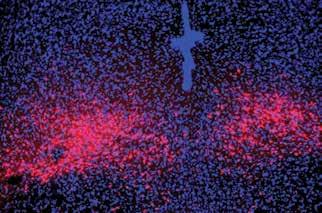
PAC1R-expressing dorsal raphe neurons in the mouse brain (red) serve as the projection targets for PACAP parabrachial neurons to mediate panic-like behavioral and physical symptoms.
UNCOVERING KEY BRAIN PATHWAY MEDIATING PANIC DISORDER SYMPTOMS
Overwhelming fear, sweaty palms, shortness of breath, rapid heart rate—these are the symptoms of a panic attack, which people with panic disorder have frequently and unexpectedly. Creating a map of the regions, neurons, and connections in the brain that mediate these panic attacks can provide guidance for developing more effective panic disorder therapeutics. Now, Associate Professor Sung Han, co-first authors Sukjae Kang and Jong-Hyun Kim, and colleagues have begun to construct that map by discovering a brain circuit that mediates panic disorder. This circuit consists of specialized neurons that send and receive a neuropeptide—a small protein that sends messages throughout the brain—called PACAP. What’s more, they determined that PACAP and the neurons that produce its receptor are possible druggable targets for new panic disorder treatments.
NATURE NEUROSCIENCE
01/2024
DISCOVERIES
6 INSIDE SALK SPRING 2024 WWW.SALK.EDU

Repairing nerve cells after injury and in chronic disease
Each year in the United States there are more than 3 million cases of peripheral neuropathy, wherein nerves outside of the brain and spinal cord are damaged and cause pain and loss of feeling in the affected areas. Professor Samuel Pfaff, first author Lydia Daboussi, and colleagues have now uncovered a mechanism in mice for repairing damaged nerves during peripheral neuropathy. The findings have the potential to inspire novel therapeutics that bolster repair functions and heal peripheral neuropathy caused by diabetes, injury, genetically inherited disease, infection, and more.
CELL REPORTS 11/2023
“It’s possible that with targeted therapeutics, we can prompt more Schwann cells to repair peripheral nerve damage and push those repairs to completion in chronic cases. Furthermore, now that we have a better grasp on the repair mechanisms, we can see if it’s possible to initiate repairs in the brain stem and spinal cord, too.”
PROFESSOR SAMUEL PFAFF
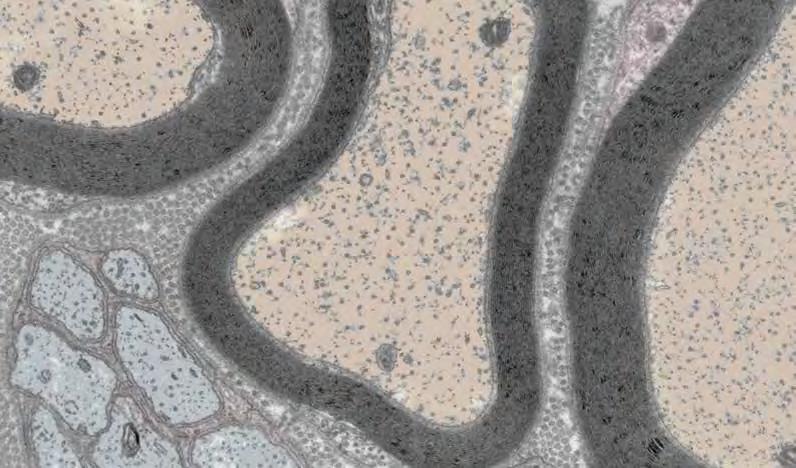

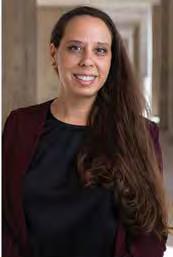
NEUROSCIENCE
Cross-section of mouse sciatic nerves.
7 INSIDE SALK SPRING 2024 WWW.SALK.EDU
From left: Samuel Pfaff and Lydia Daboussi.

Reducing stress on T cells makes them better cancer fighters
Even for killer T cells—specialized immune cells—seeking and destroying cancer cells around the clock can be exhausting. In a new study, Professor Susan Kaech, first author Anna-Maria Globig, and colleagues discovered that the body’s sympathetic stress response (“fightor-flight”) hormones can exhaust killer T cells in varying cancer types in mouse and human tissue samples—and that exhaustion can be inhibited with beta-blockers. Their discovery demonstrates the potential benefit of pairing beta-blockers with existing immunotherapies to improve cancer treatment by bolstering killer T cell function.
NATURE 09/2023

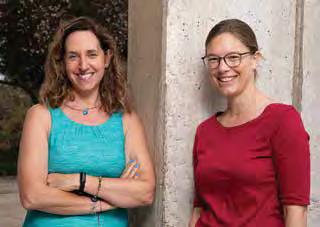
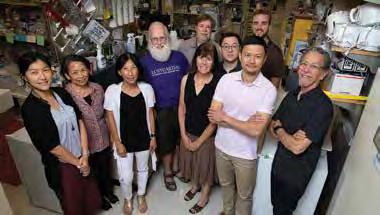
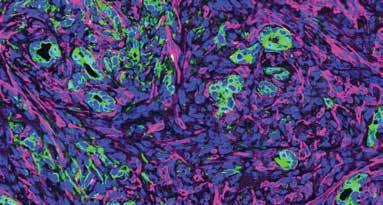
How drugs can target the thick “scar tissue” of pancreatic cancer
NATURE COMMUNICATIONS 12/2023
Pancreatic cancer is one of the deadliest cancers—only about one in eight patients survives five years after diagnosis. Those dismal statistics are in part due to the thick, nearly impenetrable wall of fibrosis, or scar tissue, that surrounds most pancreatic tumors and makes it hard for drugs to access and destroy the cancer cells. Professor Ronald Evans, Senior Staff Scientists Michael Downes and Annette Atkins, first author Gaoyang Liang, and colleagues have now discovered how a class of anti-cancer drugs called HDAC inhibitors can help treat pancreatic cancer by modulating the activation of fibroblasts—the cells that make up that wall of scar tissue.
From left: Susan Kaech and Anna-Maria Globig.
DISCOVERIES CANCER
Exhausted killer T cells with higher expression of the noradrenaline receptor ADRB1 (cyan) surround sympathetic nerves (yellow) in a virally infected spleen. Killer T cells without ADRB1 (red) do not surround the sympathetic nerves (yellow).
The abundance of cancer-associated fibroblasts (magenta) in the microenvironment with pancreatic cancer cells (green).
8 INSIDE SALK SPRING 2024 WWW.SALK.EDU
From left: Yang Dai, Gabriela Estepa, Ruth Yu, Tony Hunter, Michael Downes, Annette Atkins, Yuwenbin Li, Gaoyang Liang, Dylan Nelson, and Ronald Evans.
Rewiring tumor mitochondria enhances the immune system’s ability to recognize and fight cancer
Immunotherapy, which uses the body’s own immune system to fight cancer, is an effective treatment option, yet many patients do not respond to it. Thus, cancer researchers are seeking new ways to optimize immunotherapy so that it is more effective for more people. Now, Professors Susan Kaech and Gerald Shadel, co-first authors Kailash Chandra Mangalhara and Karthik Varanasi, and colleagues have found that manipulating an early step in energy production in mitochondria—the cell’s powerhouses—reduces melanoma tumor growth and enhances the immune response in mice. In the future, this manipulation of mitochondrial energy production may be leveraged to create new cancer therapeutics that are less harmful for mitochondria and cells.
SCIENCE 09/2023
“We wanted to better understand how tumors acquire the metabolic state that gives them a growth advantage, as well as an ability to evade the immune system, which I call the ‘double whammy.’ And we found a way to make the tumors more recognizable by the immune system and potentially more responsive to immunotherapy.”
PROFESSOR SUSAN KAECH

 From left: Susan Kaech, Karthik Varanasi, Kailash Chandra Mangalhara, and Gerald Shadel.
A mouse melanoma tumor showing blood vessels (red), MHC proteins (blue), and an infiltration of specialized immune cells (green).
From left: Susan Kaech, Karthik Varanasi, Kailash Chandra Mangalhara, and Gerald Shadel.
A mouse melanoma tumor showing blood vessels (red), MHC proteins (blue), and an infiltration of specialized immune cells (green).
9 INSIDE SALK SPRING 2024 WWW.SALK.EDU


“If we turn up Foxp3, we could see more immunosuppression, which could treat autoimmunity. If we turn down Foxp3, we could see less immunosuppression, which could be helpful in fighting cancerous tumors. Normally regulatory T cells infiltrate tumors and suppress the action of other immune cells.”
ASSISTANT PROFESSOR JESSE DIXON
A rendering of chromatin architecture that demonstrates DNA loops. The stretch of DNA (tan) is accented with colored portions of genetic code (green and pink, blue and yellow, light green and purple, and light purple and light blue) that are brought closer together by the formation of loops.
Genetic architecture may be key to using peacekeeping immune cells to treat autoimmunity or fight cancer
NATURE COMMUNICATIONS 11/2023
Regulatory T cells are specialized immune cells that suppress the immune response and prevent the body from attacking its own cells. The behavior of these cells is influenced by chromatin architecture (the 3D shape of chromosomes) and which genes are accessible to proteins like Foxp3. Now, Professor Ye Zheng, Assistant Professor Jesse Dixon, co-first authors Dongsung Lee and Zhi Liu, and colleagues have discovered that Foxp3 is essential for creating the unique chromatin architecture of regulatory T cells and, in turn, promoting their immune suppressive function.
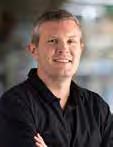
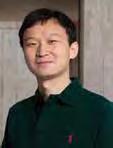
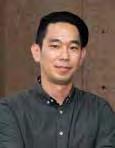

IMMUNOBIOLOGY
Top from left: Jesse Dixon and Dongsung Lee. Bottom from left: Zhi Liu and Ye Zheng.
DISCOVERIES
10 INSIDE SALK SPRING 2024 WWW.SALK.EDU

Unleashing the power of AI to track animal behavior
NATURE COMMUNICATIONS 09/2023
Movement offers a window into how the brain operates and controls the body. Methods for tracking human and animal movement have come a long way, with current cutting-edge methods utilizing artificial intelligence to automatically track parts of the body as they move. However, training these models is still time-intensive and limited by the need for researchers to manually mark each body part hundreds to thousands of times. Associate Professor Eiman Azim, first author Daniel Butler, and colleagues have created GlowTrack, a noninvasive movement-tracking method that uses fluorescent dye markers to train artificial intelligence. GlowTrack is robust, time-efficient, and high-definition—capable of tracking a single digit on a mouse’s paw or hundreds of landmarks on a human hand.
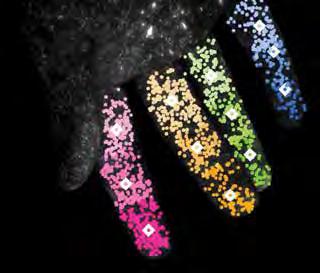


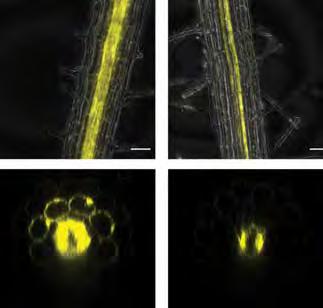
Iron influences plant immunity and may promote resiliency against climate change
Plants and animals alike rely on iron for growth and regulation of microbiomes—collections of bacteria, fungi, and more that coexist in places like the human gut or the soil around a plant’s roots. Plants face a special challenge when acquiring iron, since the strategies plants use to increase iron availability alter the root microbiome and can inadvertently benefit harmful soil-dwelling bacteria. Professor Wolfgang Busch, first author Min Cao, and colleagues have discovered how plants manage iron deficiency without helping “bad” bacteria thrive—by eliminating IMA1, the molecular signal for iron deficiency in roots at risk of bacterial attack. Additionally, they found that this iron deficiency signaling pathway and the plant immune system are deeply intertwined.
NATURE 01/2024
Top: Plant root (gray) showing IMA1 expression (yellow) during iron deficiency (left) and iron deficiency plus simulated bacterial presence (right).
Bottom: Plant root cross-section showing iron deficiency signal IMA1 expression (yellow) during iron deficiency (left) and iron deficiency, plus simulated bacterial presence (right).
From left: Daniel Butler and Eiman Azim.
Human hand marked with GlowTrack fluorescent tags.
COMPUTATIONAL BIOLOGY PLANT BIOLOGY
11 INSIDE SALK SPRING 2024 WWW.SALK.EDU
FRONTIERS

Inter(a)ction+ Infrastructure2 = InnO2vations in



Healthy Aging
Salk formula recalculates aging research, shifting focus to overall resilience and health span


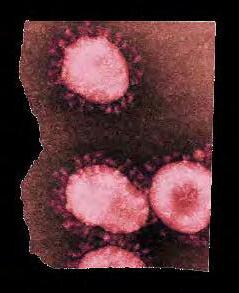
12 INSIDE SALK SPRING 2024 WWW.SALK.EDU
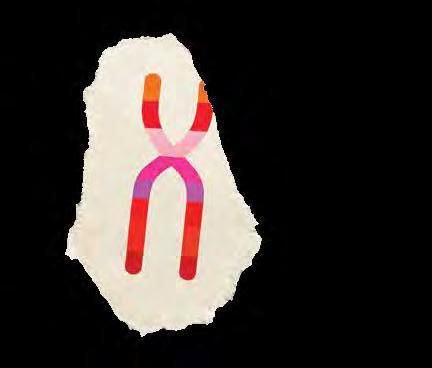
Identical twins Pearl and Ida Nowak* were born in Montana in 1929. Despite the Great Depression and World War II, Pearl says they had a happy childhood, growing up with both parents, a younger sister, and beloved pets. After college, Pearl moved to San Diego and became a teacher, while Ida stayed in the Northwest and became a librarian. Both married, had children, and by most measures, led similarly happy, productive lives.
Ida died of heart disease at age 84. Pearl, however, beat chronic lymphocytic leukemia at age 50, and now, at age 95, is still doing well. Although Pearl has declined physically since she had a fall two years ago, mentally she’s nearly as sharp as ever.
What accounts for the differences in health and life span between Pearl and Ida? Clearly, genetics—which are the same for identical twins—cannot be the only factor in how well we age.
The issue of how we age is becoming increasingly important as the age distribution in American society is shifting toward a much older population. The number of people over the age of 65 has more than doubled since 1970, and those over 85 have tripled. People over 65 are expected to comprise nearly one-quarter of the population by 2050.
American society is shifting toward a much older population. The number of people over the age of 65 has more than doubled since 1970, and those over 85 have tripled.
Although the average life span is currently much longer than before, individuals are not necessarily healthier, since aging is by far the biggest risk factor for most human diseases and overall functional decline. In 2019, the National Center for Health Statistics reported that 83 percent of Americans aged 60–79 are taking one or more prescription drugs, while 34 percent are on five or more, with the most common being beta-blockers, cholesterol-lowering agents, and antidiabetic medications.
Thus, there is an urgent need to understand aging’s biological underpinnings, with the ultimate goal of finding interventions that increase the number of healthy and productive years of human life, known as our health span.
To address that need, Salk has established the Healthy Aging Initiative, part of the Institute’s Campaign for Discovery, a sevenyear, $750 million comprehensive fundraising effort to expand Salk’s deep expertise by attracting additional exceptional talent and taking advantage of recent technological innovations to address six important research areas: healthy aging, cancer, immunobiology, neuroscience, plant biology, and computational biology.
Recognizing that everybody ages at a different rate and manner depending on their unique genetics, lifestyle, and environment (and how these factors interact), the Healthy Aging Initiative aims to focus resources on fundamental aging and health-span research that will inform the development of personalized healthspan interventions.
In order to ensure success, Salk is relying on its time-tested formula: interaction + infrastructure = innovations.
*Names changed for privacy 13 INSIDE SALK SPRING 2024 WWW.SALK.EDU

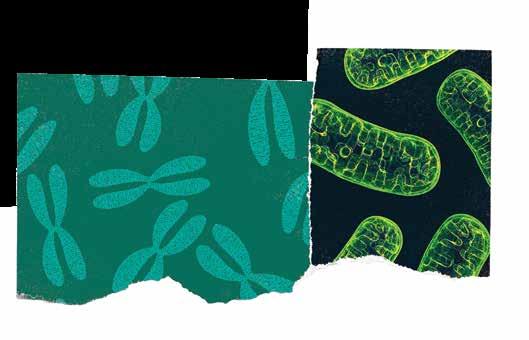
“Other aging centers focus mainly on individual themes like DNA damage or mitochondria or inflammation, among others. But that is not our approach,” says Professor and newly appointed Chief Science Officer Jan Karlseder. “At Salk, we have experts in all of the different disciplines relevant to the aging process, and our strength is that we all influence and elevate each other with our expertise.”
Karlseder and Professor Gerald Shadel routinely go to each other’s lab meetings. It’s not something you’d expect from scientists in two different fields. Karlseder’s lab studies telomere biology—specifically, how telomeres (the protective caps on chromosomes) prevent cancer formation. Shadel’s lab studies the role mitochondria (the powerhouses of the cell) play in human disease, aging, and the immune system.
But at Salk, such cross-disciplinary interactions are common. As Salk President Gerald Joyce has said, “Innovation often emerges at the intersection of scientific disciplines.”
From their interactions, Karlseder, holder of the Donald and Darlene Shiley Chair, and Shadel, holder of the Audrey Geisel Chair in Biomedical Science, discovered some intriguing similarities related to inflammatory signaling pathways. They decided to team up on a study, which they published last year.
The duo discovered that, when telomeres become very short, they communicate with mitochondria, which sets off an
inflammatory response that destroys cells that could otherwise become cancerous. Their finding was surprising in that three different hallmarks of aging—shortened telomeres, mitochondrial signaling, and immune inflammation—were teaming up to prevent an additional consequence of aging: cancer. Someone studying only telomeres or only mitochondria or only cancer would not have come across this connection.
Karlseder and Shadel plan to further examine the molecular details of these pathways and explore the therapeutic potential of targeting them to prevent or treat cancer and autoimmune diseases. Their study illustrates the complexity of both biological systems and disease, and highlights the advantage of Salk’s cross-disciplinary approach to identifying novel avenues for developing treatments for disease.
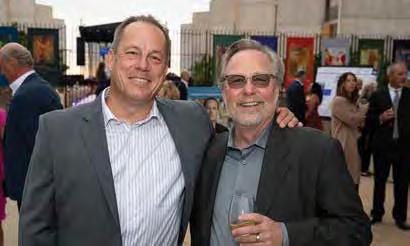
Inter(a)ction 14 INSIDE SALK SPRING 2024 WWW.SALK.EDU
From left: Jan Karlseder and Gerald Shadel.
Besides Salk’s communicative culture, what makes studies like Karlseder’s and Shadel’s possible is the Institute’s unique infrastructure, both physical and organizational.
GLENN CENTER
Inside Salk frequently mentions how Salk labs’ physical structure—open, not siloed by field—promotes cross-disciplinary synergy, but so do the Institute’s organizational structures, such as the Paul F. Glenn Center for Biology of Aging Research. The Glenn Center, which Karlseder and Shadel co-lead, was established in 2009 with a $5 million grant from the Glenn Foundation for Medical Research. The center’s successes have led to continued funding by the Glenn Foundation.
“Salk started nucleating aging research at least 15 years ago through the Glenn Foundation, and that led to our interacting and thinking about aging before many other institutions did,” says Shadel.
Over the years, Glenn Center investigators have made many significant discoveries about aging; here are some of the most recent:
Professor John Reynolds, holder of the Fiona and Sanjay Jha Chair in Neuroscience, identified a possible reason why half of older adults experience short-term memory problems: dysfunctional mitochondria at synapses (the connections between neurons) fail to meet energetic demand, supplying either too much or too little power. This energy mismatch may contribute to age-related memory loss.
Immune system T cells become less effective with age, but cancer becomes more likely to occur—a double whammy, since T cells fight infections and cancer. Professor Susan Kaech, director of Salk’s NOMIS Center for Immunobiology and Microbial Pathogenesis, has discovered how stress—acute or
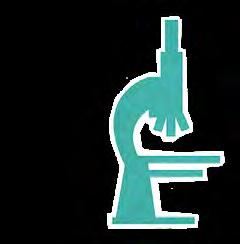


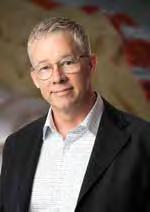
over a lifetime—is partly to blame. When we are stressed either emotionally or physically (on a cellular level), our bodies respond with “fight-or-flight” mechanisms. In a recent study, Kaech found that in mouse and human tissues beset by cancer or infections, stress hormones released by nerves attract and bind to immune cells, preventing them from working. Kaech says the work reveals how chronic stress can cause immunosuppression that literally makes us sick.
But the team also discovered that beta-blocker drugs—used to control people’s blood pressure and heart rate—can help revive the immune cells. The team’s intervention resulted in more functional immune cells (killer T cells) that were better at destroying cancer. Because beta-blockers are already some of the safest and most widely used medicines for heart disease, the team hopes that this new way to “rejuvenate” immune responses in cancer could be investigated more closely, clinically, to develop more potent and long-lasting cancer-fighting regimens.
15 INSIDE SALK SPRING 2024 WWW.SALK.EDU
Susan Kaech (above) and John Reynolds (right).
Infrastructure2
“Age brings a myriad of immune changes,” notes Kaech, who holds the NOMIS Chair. “From slower wound healing to weakened cancer surveillance, aging impacts our immunity. Discovering a new way to enhance cancer immunotherapy, especially through repurposing old-but-good drugs, is incredibly exciting.”
Middle age is a time when many metabolic processes become less effective, and disease processes begin. Higher-than-normal blood sugar levels (glucose intolerance) can lead to diabetes, metabolic-dysfunction-associated liver disease, and liver cancer.
Professor Satchin Panda, holder of the Rita and Richard Atkinson Chair, studies the genes, molecules, and cells that keep all of our biological clocks (known as circadian rhythms) synchronized. One way to do this is via time-restricted eating, popularly known as intermittent fasting, a dietary regimen that restricts eating to specific hours. In a recent study, Panda found that time-restricted eating was helpful for glucose intolerance in middle-aged mice. The study revealed that time-restricted eating was associated with a lower increase in blood sugar and a faster return to normal blood sugar levels in middle-aged males, with a significant improvement in glucose tolerance in young and middle-aged females. And, while mice are not humans, his study in firefighters (ages 21–59) showed that time-restricted eating significantly improved blood sugar and blood pressure in those who had elevated levels to begin with.
“Circadian rhythms are generally not included in lists of hallmarks of aging, but circadian timetables come into play for all of the diseases of aging,” says Panda. “Strong circadian rhythms in our gut, liver, kidney, muscle, and heart help to optimize our metabolism. They also boost our immune system and help our brain receive and process information. There is even new research showing that circadian rhythms are very important for muscle, tendon, and bone repair and recovery.”

“Circadian rhythms are generally
not included in lists of hallmarks of aging, but circadian timetables come into play for all of the diseases of aging.”
SATCHIN PANDA
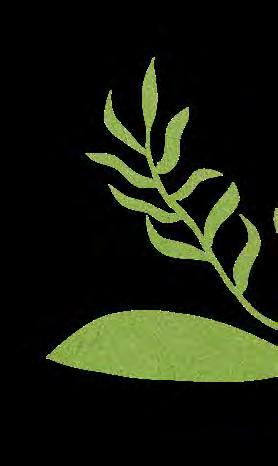
Half of Americans aged 45 to 84 have atherosclerosis the buildup of artery-blocking plaques which can lead to heart attacks, strokes, and vascular dementia.


Download the app Learn more about your own circadian rhythms with an app developed by Salk Professor Satchin Panda and team. Download at mycircadianclock.org.
My Circadian Clock

Half of Americans between ages 45 and 84 have atherosclerosis—the buildup of artery-blocking plaques—and don’t know it. The plaques can lead to heart attacks, strokes, and vascular dementia. Shadel, in another recent collaboration, this time with UC San Diego researchers, found that DNA inside mitochondria, which is maternally inherited, increases the risk for atherosclerosis when it escapes mitochondria and promotes inflammation in immune cells called macrophages. Blocking this pathway in patients with certain mutations that are known to be major risk factors for macrophage-mediated atherosclerosis could form the basis for new treatments.
16 INSIDE SALK SPRING 2024 WWW.SALK.EDU

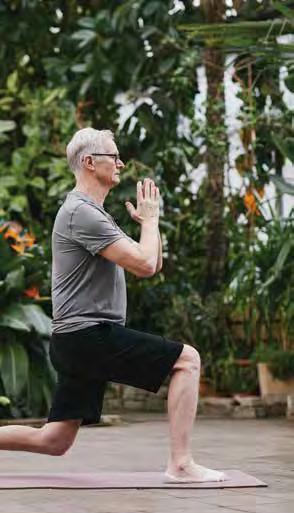


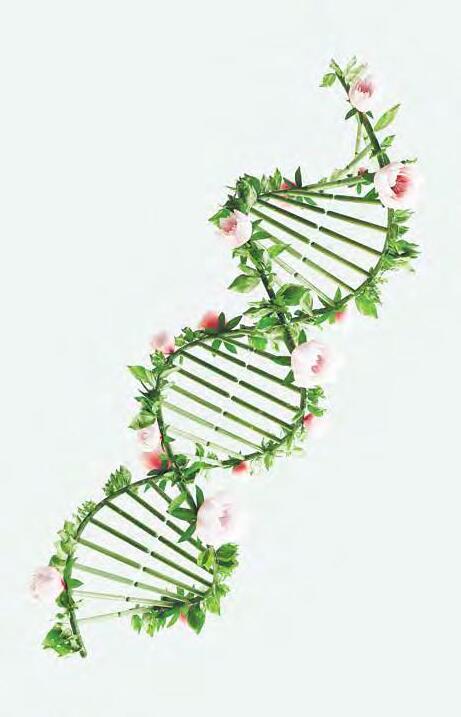
SHOCK CENTER
Shadel, in addition to co-leading the Glenn Center, is also the director of a newer component of Salk infrastructure: the San Diego Nathan Shock Center of Excellence in the Basic Biology of Aging—a consortium between the Salk Institute, UC San Diego, and Sanford Burnham Prebys. The Shock Center was established in 2020 thanks to a $5 million grant from the National Institute of Aging with the goal of understanding the diversity (“heterogeneity”) of human aging.
The center provides three novel scientific Research Resource Cores to develop new human cell models of aging and enable the integrated analysis of molecular, cellular, and tissue heterogeneity. The Shock Center also promotes research on the basic biology of aging through pilot grant funding, training and mentoring activities of a Research Development Core, and robust outreach efforts.
In late 2022, the Shock Center received funding to enroll participants from the Rancho Bernardo Study of Healthy Aging—one of the longest, continuously National Institutes of Health-funded studies in existence—into the center’s own clinical cohort to study differences in how individuals age at the cellular level. Scientists at the center are collecting skin samples from living Rancho Bernardo Study participants whose individual trajectories of aging have been followed and measured for many years. Using stem cell technology, researchers will be able to transform these samples into other cell types, such as heart muscle cells, neuronal cells, and liver cells, for studies aimed at better understanding the complexity and tissue-specificity of cellular aging.
AHA-ALLEN INITIATIVE
In late 2018, a team of Salk researchers was awarded $19.2 million by the American Heart Association-Allen Initiative in Brain Health and Cognitive Impairment to investigate mechanisms underlying Alzheimer’s disease and age-related cognitive decline and to uncover new therapies. The effort, led by Professor Rusty Gage, holder of the Vi and John Adler Chair for Research on Age-Related Neurodegenerative Disease, is comprehensively analyzing interactions between five areas key to brain health: proteins, genes, metabolism, inflammation, and epigenetics. In typical Salk fashion, scientists with completely different expertise are working on a common challenge: understanding Alzheimer’s.
17 INSIDE SALK SPRING 2024 WWW.SALK.EDU

InnO2vations
When talented research teams have supportive infrastructure, innovation is bound to follow. Salk scientists often develop new tools and techniques that revolutionize how research is done.
Because chronological age doesn’t necessarily align with biological age, better biomarkers are needed to help predict disease risk and life span. Salk Professor Tatyana Sharpee and Professor Alexey Terskikh at Sanford Burnham Prebys recently developed an imaging-based approach to quantify aging and its inverse—rejuvenation. Terskikh had developed a new experimental imaging approach to monitor changes in chromatin (DNA plus proteins) and in the epigenetic “tags” attached to DNA in single cells. This experimental approach produces a lot of data obtained at the limit of imaging resolution, and therefore, requires novel statistical methods to extract appropriate signals. Sharpee’s group was working on methods of just this kind, using geometry techniques that capture rapidly expanding data divisions in a tree-like manner. Combining the duo’s experimental and statistical innovations makes it possible to predict biological age more accurately. The approach can also detect how changes at the microscopic cellular levels in blood correlate with organism physiology and behavior, such as sleep and mobility, even among individuals of the same age.
AD

“So much of our understanding of aging is based on populationlevel data, but that doesn’t really explain what’s going on with any particular individual,” says Sharpee, who holds the Edwin K. Hunter Chair. “The beauty of our new approach is that it advances our understanding of how individual-level biomarkers of aging at the cellular level predict physiologically relevant parameters, which is an important first step in personalized interventions for aging.”
Sharpee is a member of both the Computational Neurobiology Laboratory and the Integrative Biology Laboratory, and also researches how the brain’s billions of neurons use energy and exchange information.
Salk is highly prolific when it comes to innovations in neuroscience, including ways to study Alzheimer’s disease.
While Alzheimer’s disease is one of the top 10 causes of mortality in the US, it’s also uniquely awful in the way it robs


“Our goal is to define the cellular and molecular mechanisms that contribute to accelerated decline, as in Alzheimer’s disease.”
RUSTY GAGE
people of their identities and relationships with loved ones. Salk researchers are investigating this disease from many different angles, making the idea of effective treatments in our lifetime seem possible.
In 2015, Gage pioneered a method to create brain cells from the skin samples of older people that retained age-related signatures, making the cells invaluable for studying age-related diseases like Alzheimer’s and Parkinson’s. The technique advanced research into brain aging because, before that, “reprogramming” skin cells into stem cells that could be turned into, say, neurons, erased all the signatures of aging. These new techniques are the cornerstone of the aforementioned aging and disease modeling efforts in both the AHA-Allen Initiative and the Shock Center.
More recently, Gage’s lab found that neurons from people with Alzheimer’s disease have a loss of functional activity, impaired metabolism, and increased inflammatory properties. The neurons show deterioration and undergo a late-life stress process called senescence. But administering a custom drug cocktail to the cells reduced the number of senescent neurons to normal levels. The work suggests that targeting senescent cells could be a useful approach for slowing the neuroinflammation and neurodegeneration seen in Alzheimer’s disease.

senescence 18 INSIDE SALK SPRING 2024 WWW.SALK.EDU




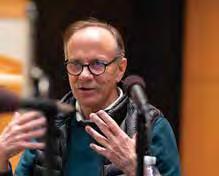

Salk researchers are investigating Alzheimer’s disease from many different angles, making the idea of effective treatments in our lifetime seem possible.
“Age-related neurodegeneration and the concomitant cognitive decline is inevitable and relentless,” says Gage. “Our goal is to define the cellular and molecular mechanisms that contribute to accelerated decline, as in Alzheimer’s disease. By identifying the molecular mechanisms and the cells that are most affected, we can develop methods of intervention to slow that decline and preserve health. Interestingly, many of the targets we have identified, so far, are cancer-related pathways for which drugs and therapies have been developed. We are currently repurposing cancer drugs for the treatment of age-related cognitive decline.”
Professor Joseph Ecker, holder of the International Council Chair in Genetics and a Howard Hughes Medical Institute investigator, pioneered a method to tag DNA, RNA, and chromatin (DNA plus proteins) in the same cell. The method allows researchers

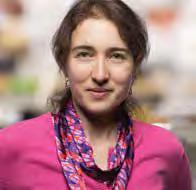
to measure all three types of information simultaneously, and all without destroying the cell, both major innovations. This genomic technology, called snmCAT-seq, took five years to develop and is already proving useful for comparing cells from healthy human brains with those from brains of individuals affected by Alzheimer’s and other neurodegenerative diseases.
Associate Professor Nicola Allen studies astrocytes, star-shaped brain cells that play a key role in helping neurons develop and work properly. She found that neurons and astrocytes work together to form healthy synapses, the connections between neurons. Synapse loss is associated with cognitive impairments, such as those seen in dementia. Allen and her team are studying whether astrocytes can be manipulated to stimulate neurons to repair synapses or form new ones in disorders such as Alzheimer’s disease.
Left: Nicola Allen and colleagues discovered that the protein Chrdl1—and the astrocytes primarily responsible for producing it—plays a key role in brain development and flexibility.
Joseph Ecker
Tatyana Sharpee
19 INSIDE SALK SPRING 2024 WWW.SALK.EDU
Above: Neurons (dark blue), astrocytes (teal), and protein Chrdl1 (red) in the upper layers of a mouse brain’s visual cortex.
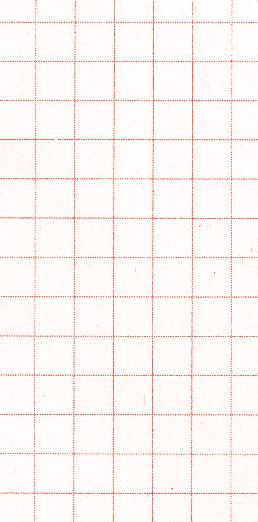
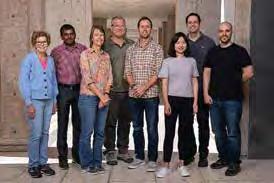
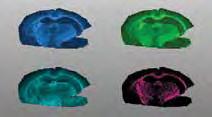
Left: Professor Alan Saghatelian (second from right) and his research team.
Right: The brain is comprised of lipids, or fats, but the role of these molecules in health and disease remains unknown. The newly identified class of lipids, called SGDGs, decreases with aging, which suggests they may play a role in brain aging.
In yet another insight into Alzheimer’s disease, Professor Alan Saghatelian, in collaboration with UC San Diego scientists, discovered that a class of lipids called SGDGs, which change and decline in the brain with age, has anti-inflammatory effects. Saghatelian, holder of the Dr. Frederik Paulsen Chair, says that SGDGs clearly represent a novel piece in the aging puzzle, thereby warranting further study.
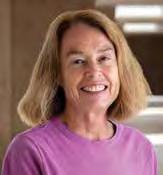
“We think CMS121 has real promise, as it targets a novel pathway and is also effective against multiple risk factors for Alzheimer’s.”
PAMELA MAHER
Finally, a study by Research Professor Pamela Maher showed how cannabinol (CBN), a non-psychoactive compound derived from cannabis, can protect nerve cells from oxidative damage, a major pathway to cell death. (Brain atrophy from cell death is a prominent feature of Alzheimer’s disease.) She found that CBN works in this context by protecting mitochondria.
Maher is also responsible for a phase 1 clinical trial for CMS121, a compound developed and studied at Salk over the last 15 years. The story of CMS121 illustrates how long it takes to develop therapies derived from basic research. Maher began working on the research that resulted in CMS121 in 2006, but the compound did not reach the clinic until 2022, and will require additional time and money to complete all three phases of clinical trials required to bring a drug to market.
“Our first-in-human study with CMS121 in young and old healthy adults showed good safety and tolerability, so we are now trying to get funding for a trial in early Alzheimer’s disease patients,” says Maher. “We think CMS121 has real promise, as it targets a novel pathway and is also effective against multiple risk factors for Alzheimer’s.”
The time and resources involved in finding effective therapies is significant, which is why, despite Salk’s impressive track record of obtaining funding from NIH, private philanthropy is still crucial for pushing research forward.
20 INSIDE SALK SPRING 2024 WWW.SALK.EDU
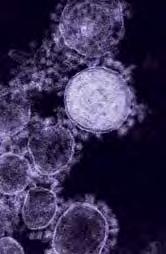
F(o)rmula for Success3
Salk’s President Gerald Joyce is calling 2024
“The Year of Healthy Aging,” reflecting the Institute’s focus on the topic.

The complexity of aging—it’s not just genetic or epigenetic or metabolic or biochemical—suggests that the traditional research model of studying each aspect independently is not the most effective. Instead, the Salk strategy of bringing the best researchers from different areas together, to collectively approach an issue and to inspire each other, offers more promise.
“We are in an exciting new era of research on aging, where we know many of the cellular and molecular processes involved,” says Professor Gerald Shadel. “Given Salk’s long-standing foundational research in aging and age-related diseases— coupled with its unique formula of infrastructure, interdisciplinary collaboration, and integrative approaches—we are uniquely poised to capitalize on support for our Healthy Aging Initiative and fundraising campaign.”

Your support adds up Donate today to multiply innovations in Healthy Aging research. salk.edu/give

“We are in an exciting new era of research on aging, where we know many of the cellular and molecular processes involved.”
GERALD SHADEL
21 INSIDE SALK SPRING 2024 WWW.SALK.EDU

22 INSIDE SALK SPRING 2024 WWW.SALK.EDU
Salk mourns the loss of Nobel Laureate
ROGER GUILLEMIN IN MEMORIAM
1924-2024
The Institute remembers the “father of neuroendocrinology” for his many contributions to science and friendship to all.
23 INSIDE SALK SPRING 2024 WWW.SALK.EDU

alk
Distinguished Professor Emeritus Roger Guillemin,
recipient of the 1977 Nobel Prize in Physiology or Medicine and neuroendocrinology pioneer, died on February 21, 2024, in Del Mar, California, at the age of 100.
The neuroendocrinology pioneer was a treasured member of the Salk community, deeply appreciated both for his many achievements and for his loyal friendship and mentorship, even after retirement.
“We are deeply saddened by Roger’s passing,” says Salk President Gerald Joyce. “But I’m glad many of us had the chance to celebrate his 100th birthday with him earlier this year. It was an honor to have known one of the world’s preeminent scientists and someone who also was one of the kindest persons I’ve met. Roger leaves a remarkable legacy at Salk and around the world. His brilliance, commitment, and passion for discovery brought forth some of the last century’s most significant advances in
“I really wanted to be a physician... [and] I knew all my efforts would be to help people.”
ROGER GUILLEMIN
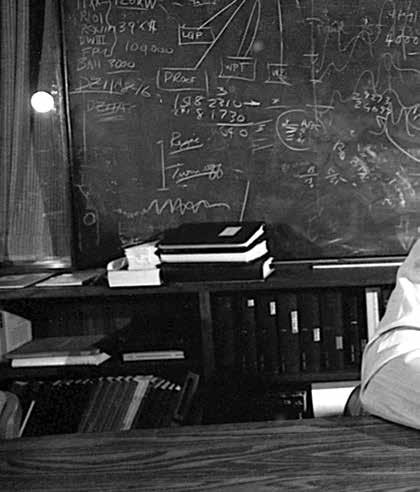

our knowledge of the human brain. He was a cherished colleague and mentor to many. I know that generations from now we will still be talking about his contributions to science and humanity.”
Guillemin’s time at Salk and Nobel Prize
Considered the founder of the field of neuroendocrinology, Guillemin’s pioneering research into brain hormones has led to treatments for disorders ranging from infertility to pituitary tumors.
When Guillemin joined Salk in 1970, he headed the newly established Laboratories for Neuroendocrinology. He and his group discovered somatostatin, which regulates the activities of the pituitary gland and the pancreas. Somatostatin is used clinically to treat pituitary tumors. He was among the first to isolate endorphins—brain molecules that act as natural opiates—and his work with cellular growth factors led to the recognition of multiple physiological functions and developmental mechanisms.
Guillemin played a key part in discovering the brain’s role in regulating hormones—molecules that act as
24 INSIDE SALK SPRING 2024 WWW.SALK.EDU

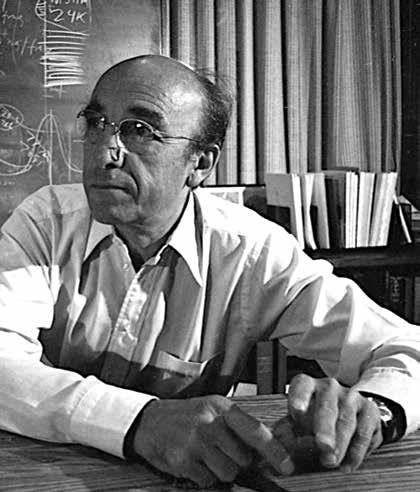
chemical messengers between different parts of the body and regulate bodily functions. While scientists had long believed that the brain ultimately controlled the function of hormone-producing endocrine glands, there had been scant evidence to prove exactly how it did so.
After meticulous study of materials harvested from 1.5 million sheep brains, Guillemin and his team made a breakthrough. They discovered releasing hormones, produced in small quantities in the hypothalamus of the brain. These are delivered to the adjacent pituitary gland, which in turn is triggered to release its own hormones that are dispersed through the body. Guillemin and Andrew Schally separately extracted a sufficient amount of one releasing hormone to determine its structure in 1969. They subsequently were able to produce it with chemical methods.
Their work would lead them to the 1977 Nobel Prize in Physiology or Medicine, shared also with Rosalyn Yalow for a separate but related discovery, for “discoveries concerning the peptide hormone production of the brain.”
This breakthrough resulted in the identification of a molecule called TRH (thyrotropin-releasing
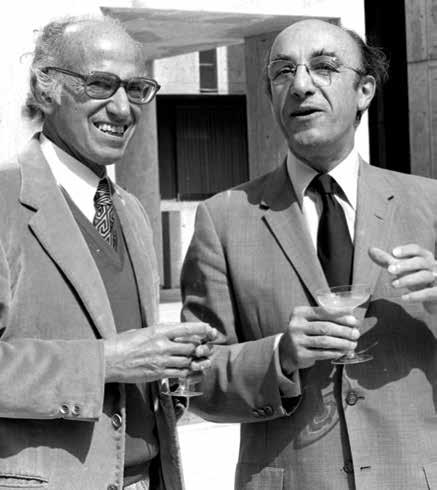
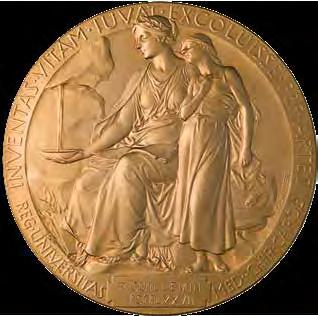
hormone), which ultimately controls all the functions of the thyroid gland. In the following years, Guillemin and his colleagues isolated other molecules from the hypothalamus that control all functions of the pituitary gland—for instance, GnRH (gonadotropin-releasing hormone), a hypothalamic hormone that causes the pituitary to release gonadotropins, which in turn trigger the release of hormones from the testicles or ovaries.
Left photo: Guillemin with Wylie Vale. Right photo: Guillemin with Jonas Salk. Bottom photo: Guillemin’s Nobel Prize, 1977.
25 INSIDE SALK SPRING 2024 WWW.SALK.EDU
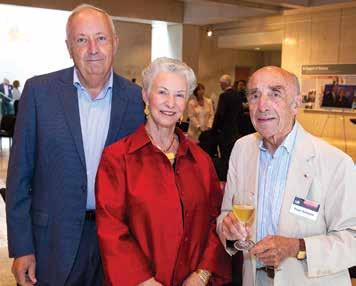
This discovery led to advancements in the medical treatment of infertility and is also used to treat prostate cancer.
Though Guillemin retired from the lab in 1989, he remained active at Salk throughout the following years. He shifted his long-standing expertise with computers from science to art and was one of the pioneers in the expanding field of digital paintings.
In 2007, Guillemin was gracious enough to serve a term as interim president of the Salk Institute, saying, “By all criteria, the Salk Institute is one of the most prestigious biological research institutions of the country and in the world.”
Prior to the COVID-19 pandemic, Guillemin kept regular office hours at the Institute, continuing to provide his time and experience to any who might seek his council.
Path to science and Salk
Born in Dijon, the capital of France’s Burgundy region, Guillemin gained an early interest in science. As a child, he collected organisms, including mushrooms, for classification. He was also good with his hands, using his dexterity and intellect to build radios and transmitters. After attending public schools, he entered medical school at the Université de Bourgogne in 1943.
Guillemin’s youth and college experience was wrought with challenges—most considerable of which was the
German occupation of France. During his first year of medical school, he and several of his classmates received orders to report to Munich to build weapons for the German army, but they refused.
“We all tore the thing up and said, ‘We’re going to disappear in the Underground,’” Guillemin said in a 2013 video, where he reminisced about his scientific accomplishments.
Guillemin went on to earn his MD in 1949 and practiced medicine for several years before committing to research full time. He earned his PhD in physiology, with a special focus on experimental endocrinology, from Université de Montréal in 1953. Shortly after completing his PhD, Guillemin became an assistant professor of physiology at the Baylor University College of Medicine.
In addition to the 1977 Nobel Prize, Guillemin received numerous accolades for his work. These included the Gairdner International Award, the Dickson Prize, the Passano Award, the Lasker Award, and the President’s National Medal of Science, presented to him by thenPresident Jimmy Carter. He was also an elected member of the National Academy of Sciences (1974) and the American Academy of Arts and Sciences (1976). Guillemin’s native France recognized his contributions to science and health by naming him a Commander in the Legion of Honour, the country’s highest order of merit.
 Guillemin (far right) with Jean and Catherine Rivier.
Guillemin (far right) with Jean and Catherine Rivier.
26 INSIDE SALK SPRING 2024 WWW.SALK.EDU
Roger with daughter, Claire, and wife, Lucienne.
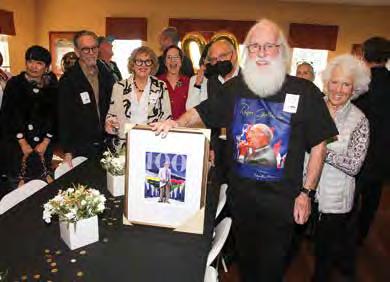
Helping people
Guillemin was a mentor to many future leaders in endocrinology and medical research while at Baylor, including Catherine and Jean Rivier, as well as Wylie Vale, who would all follow Guillemin to Salk in 1970 and join the faculty there.
For all of his accomplishments, Guillemin was always quick to point out the contributions of the many people who worked alongside him. “I have had the extraordinary privilege to work with wonderful collaborators, some so much more knowledgeable in their own field than I was (or still am), all full of enthusiasm and sharing the common ethics of science,” he wrote as he reflected on achieving the Nobel Prize.
When asked in a September 2017 interview with the La Jolla Light what his philosophy in life was, Guillemin responded, “Help people. I really wanted to be a physician… [and] I knew all my efforts would be to help people.”
Up until his last few years of life, Guillemin was an active member of the La Jolla, California, community and was an avid collector of French and American paintings and sculptures, as well as Papuan and pre-Columbian pottery.
Guillemin is survived by his five daughters, one son, four grandchildren, and two great-grandchildren. He was predeceased by his wife, Lucienne, a talented musician, who died at the age of 100 in 2021, after the couple was married for 69 years. Guillemin died on her birthday.
BIRTHDAY WELL-WISHES FROM COLLEAGUES
In January, Guillemin turned 100, and at that time several of his co l leagues showed their appreciation for him. Here are some of their sentiments from that occasion:
“ “ “ “
Roger has had a very big influence on my scientific and personal life,” said Salk Professor Rusty Gage, past president of Salk. “His own contributions to science are enormous, but in addition, he has been so supportive and generous with his encouragement and advice to me and many other scientists whose lives he has touched. Importantly, he is a model for fostering the care and love of family, as reflected in his loving relationship with his late wife, Lucienne, and his remarkable children, including the wonderful Claire. I am proud to count Roger as a dear friend, colleague, and mentor.”
Roger has always been a personal inspiration,” said Salk Professor Greg Lemke. “His curiosity to understand the brain’s regulation of physiology, which was unrelenting, led to discoveries that have impacted the lives of millions.”
I’ve known Roger for 45 years now, and he is truly a trusted colleague, a good friend, and an inspirational mentor,” said Salk Professor Ronald Evans. “His pioneering discoveries of hypothalamic peptides launched the field of neuroendocrinology.”
Even before my arrival at the Salk Institute as a postdoctoral researcher in 1971, Roger had established himself as a preeminent scientist,” said Salk Professor Tony Hunter. “A few months later, his group announced their historic discovery of the somatostatin neuropeptide that blocks growth hormone release, creating huge excitement— deservedly so. Over the years, Roger has been a great inspiration to me, and his discovery of somatostatin was an example of the type of groundbreaking research that has become the hallmark of the Institute. It’s an honor to celebrate his truly amazing life of science and art.”
In January 2024, Salk Professor Tony Hunter (foreground) and Guillemin’s family, friends, and colleagues celebrated Guillemin’s 100th birthday.
27 INSIDE SALK SPRING 2024 WWW.SALK.EDU

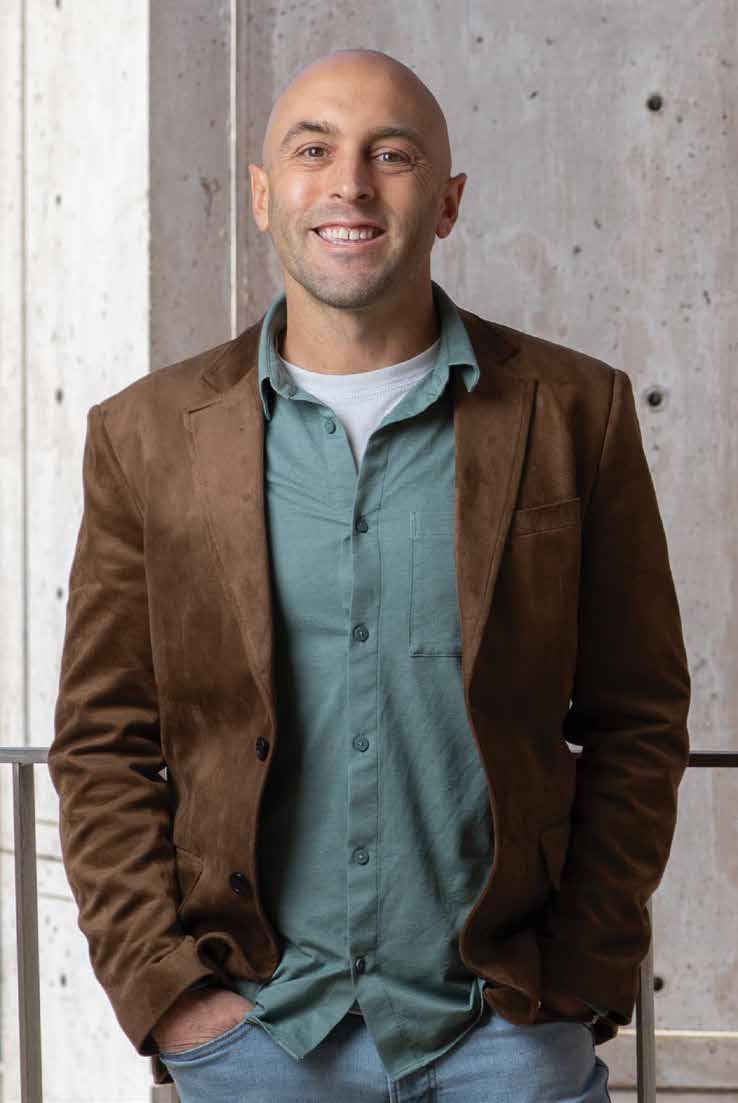
OBSERVATIONS 28 INSIDE SALK SPRING 2024 WWW.SALK.EDU
HOLLERN DANIEL
Turning a cancer diagnosis into a career in basic research
Assistant Professor Daniel Hollern pivoted his career trajectory after a family member’s life-changing diagnosis pushed his alreadycurious mind off a cliff of questions—starting with, “What can I do to help him?”
Inside Salk sat down with Hollern to uncover the details of his journey from Michigan to California, and where—along the way—he got his start as an immunologist chipping away at cancer’s fundamental processes.
Hollern looks at how the immune system and triple-negative breast cancer interact, asking where and why the immune system fails to

recognize and destroy cancerous cells. He’s currently focused on the immune system’s B cells, which he is trying to program to paint targets on cancer cells to promote their destruction.
Hollern has already earned numerous awards for his cancer research efforts, including an Aitch Foundation Award, two National Institutes of Health Ruth L. Kirschstein National Research Service Awards, a Joseph S. Pagano Award, a Metavivor Award, a California Breast Cancer Research Program Award, and a Susan G. Komen grant. Still early in his career, these honors mark the beginning of a lifetime of discovery to come.
Learn about Hollern’s path to Salk, research questions, and future aspirations in his conversation with Inside Salk.
29 INSIDE SALK SPRING 2024 WWW.SALK.EDU
When did you first become interested in science?
DH: I was the oldest of seven kids, so one of the things my mom did to calm the chaos a bit was allow us to take all the spices, vinegar, and baking soda to create concoctions and “play science.” I would argue that it wasn’t totally scientific at the time, but it really got me started being creative and using my imagination in a scientific way.
I really started enjoying science in high school, since I saw it going hand in hand with sports. At first, I wanted to be an orthopedic surgeon because I had sports injuries. That started me thinking about human health, what’s going on underneath the hood, and how we might fix things in our bodies.
When did you make the transition from orthopedic surgery to cancer biology?
DH: I was really focused on this orthopedic surgery career path all the way until my grandfather was diagnosed with cancer while I was in college. And when I found out what type of cancer he had, I’d never heard of it. It was angiosarcoma in his scalp. I started to learn a lot about it because my grandfather was my best friend. He was my anchor, and seeing what was going to happen to him with no treatment options just really devastated me and started to get me thinking, “What can I do to help him?”
So, I started to read the scientific literature that's out there and realized I needed to go into basic research to start to tease apart what's happening in these cancer patients. What's limiting their therapeutic options? What options do they have if their tumors aren't showing specific markers for an available treatment? What can we do for those people? Since changing my major as an undergrad, I’ve been entirely focused on this mission.
And once you decided on basic research, did those childhood kitchen experiments translate to lab skills?
DH: I enjoyed lab work, but I was not skilled coming into the lab. In fact, that was one of the things that I remember telling my eventual mentor when I interviewed with him. I only had one semester of undergraduate independent research experience. I had one technique under my belt. And so what I told him is, “I have a lot to learn, but you'll never find somebody that will work as hard as me to achieve the goals of your laboratory and to learn these methods that you're using to take apart cancers to discover why it exists in people's bodies and why it’s so hard to contain.”
What kinds of methods and techniques have you used since then?
DH: Back then, I trained a lot in a method called bioinformatics, where we sequence tumors and learn what instructions they're using that are sustaining the
cancer. Then, we can look at those instructions and see where we can manipulate or interrupt that pathway to cancer growth.
Technology has advanced so much now that it’s hard to even keep up with the new platforms. Luckily, at Salk we have these advanced technologies and the resources available to maximize their impact. What these modern technologies allow us to do is take a part of a tumor, while simultaneously looking at the patient’s immune system function—that way we can identify exactly what is going wrong between the two.
Now that you’re at Salk, what sorts of projects are you working on?
DH: We’re trying to understand what the dysfunctions are in a patient's immune system that prevent it from eliminating cancer. It's estimated that every single day, we have cancer cells arise in our bodies and our immune system takes care of them. We want to see why and where this process is going wrong in people with cancer, then try to hardwire it to start working right.
What’s amazing about doing this is we can see that we can actually cure tumors without chemotherapy by just solving those problems in the immune system, so it recognizes and attacks cancer again. And we are currently focused on triple-negative breast cancer, which is a type of breast cancer that doesn’t have the three most common breast cancer receptors that established therapies target, in turn making it much more difficult to treat.
What’s important about the research we’re doing in triple-negative breast cancer is that it's one of the most complex and challenging tumor types to cure with immunotherapies. So, what I really envision is, as we start to establish the fundamental principles of how to activate an immune response against these tumors, we’ll see those principles translate to other cancer types that have those same challenges.
What part of the immune system most interests you?
DH: We’ve identified B cells as a really important cell in the immune system when it comes to cancer. The reason that B cells are so important for developing new cancer immunotherapies is that they are capable of basically painting a target on any type of tumor cell to mark it for destruction by the immune system. And one of the ways B cells do this is through the production of antibodies, which are large proteins that function as that “bulls-eye” for our immune system to go after.
What is amazing is these protective antibodies cover every extracellular surface. What we're trying to do with cancer is really use these B cells to paint targets on cancer cells, amplify an immune response against it, and cause that curative response that patients need.

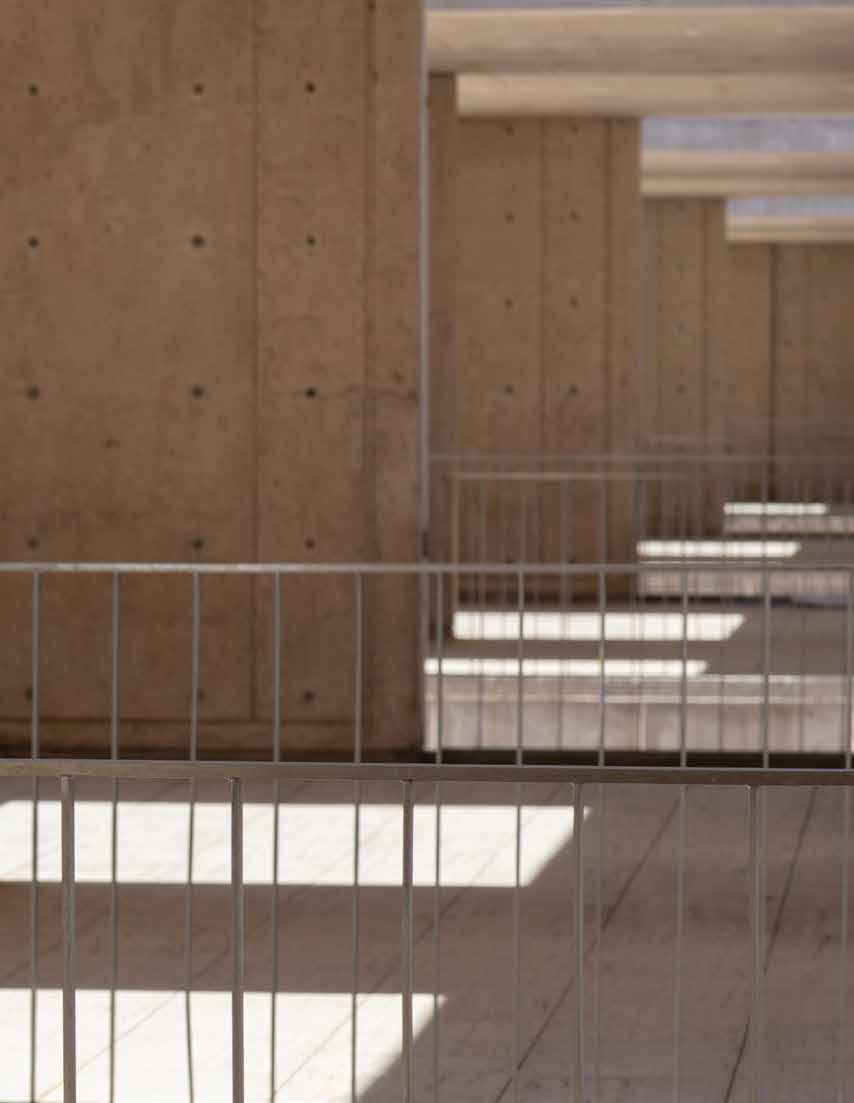
30 INSIDE SALK SPRING 2024 WWW.SALK.EDU

Is there a reason you look at breast cancer over another cancer type, like the one your grandfather had?
DH: They had a really strong breast cancer research program at Michigan State University, where I did my PhD. And I realized, if we're trying to solve cancer and we appreciate that everybody's cancer is unique, that patient-to-patient variation is very present in breast cancer. So, if I learn those fundamentals and how to do the research within breast cancer, then I'm going to be able to pivot and attack the angiosarcoma that killed my grandfather. That's something that I'm aiming to do here at Salk.
Which of your recent discoveries do you find the most exciting?
DH: We’re really focusing on figuring out how to hardwire a B cell response to kill every single cancer cell that's in a tumor. B cells are a unique solution to the challenges that cancer is presenting us with. Once we identify the way B cells can be manipulated to target cancer, which is what we're focused on in my laboratory, we envision that we're going to be able to ensure that every patient’s immune system is responding in a way that targets all of the cancer cells and allows them to survive this disease.
The fundamentals are becoming more and more clear as to how we correct those immune system imbalances. Soon enough, cancer is not going to be this impossible-
“Soon enough, cancer is not going to be this impossibleto-cure disease. [...] [That] keeps me motivated and makes everyone in my lab feel like we’re chasing something important that will translate to patient care.”
DANIEL HOLLERN
to-cure disease. Instead, you're going to need treatment, but you're going to survive. Your life expectancy is not going to change. And that is just such an exciting and hopeful place to be in that it wasn’t imaginable even when I started graduate school. It keeps me motivated and makes everyone in my lab feel like we’re chasing something important that will translate to patient care.
Do you collaborate often with other Salk labs?
DH: Yes, we collaborate with other faculty and are so inspired by their research. I have never experienced such a transformative time in my life, where my perspective developed and broadened any faster or more. When I came to Salk and started to interact with the scientists here, I started to think, “Okay, in my laboratory, if this is true, how do I apply this concept, and what are the important directions to start to go in?” Other faculty have been one of the crucial components in creating our sense of confidence that we can really attack this disease effectively, because we gain inspiration and hope from their discoveries, and we are in that sort of environment where inspiration is happening pretty much on a daily basis.
Scan here or visit streaming.salk.edu to watch a video in which Hollern describes his upbringing, career journey, and motivations.
31 INSIDE SALK SPRING 2024 WWW.SALK.EDU
INSIGHTS
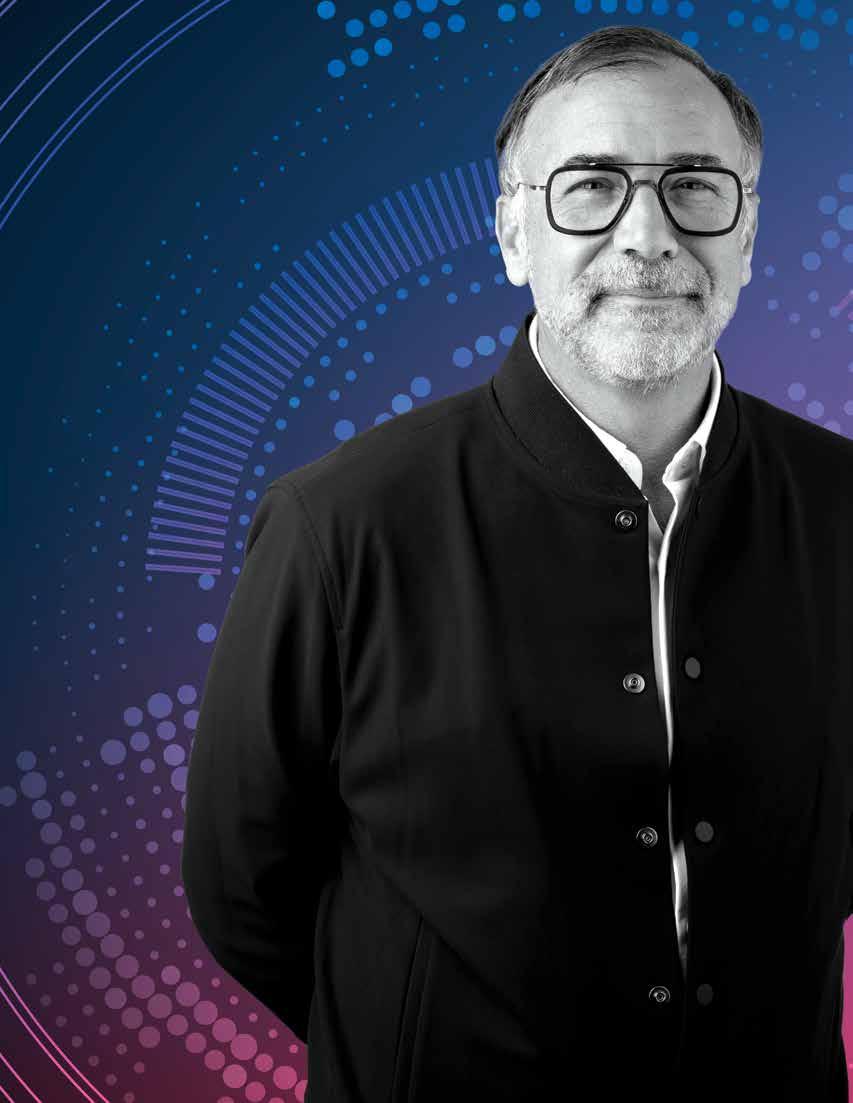
Jerry Sheehan
Collaborating shoulder to shoulder with sCientists
When you think about a person who heads an information technology department, you might not envision them working shoulder to shoulder with research scientists. But that’s exactly the approach Jerry Sheehan is taking as Salk’s new chief information officer (CIO).
32 INSIDE SALK SPRING 2024 WWW.SALK.EDU

PATH TO SALK
Sheehan’s career spans 30 years of information technology leadership, in which he has provided foundations for innovation and efficient user-centric service delivery in research- and education-focused environments. In addition to building partnerships, he is an expert in computational and data-intensive scientific research, cyberinfrastructure, data governance, and strategic planning.
Sheehan served most recently as vice president and CIO at San Diego State University, where he led the development and deployment of information technology infrastructure and services for research, instruction, and administration. Before San Diego State University, he served as vice president and CIO at Montana State University and in various leadership roles at the University of California San Diego/California Institute for Telecommunications and Information Technology (Calit2), Purdue University, and the National Center for Supercomputing Applications (NCSA).
When the CIO position at Salk became available, Sheehan says he pursued it because he saw it as a chance to be part of a scientific institution focused on helping to cure diseases—a motivation that was stoked by the recent loss of several close family members to various diseases.
“Working somewhere that expands understanding of the human condition and betters the world—it's both humbling and invigorating,” says Sheehan, who assumed the role of CIO on December 4.
WORK AT SALK
Sheehan works closely with the president, chief science officer, and other senior administrative and scientific leaders to lead technology efforts across the Institute and drive digital innovation in support of the Institute’s leading-edge scientific research.
Sheehan sees his primary function as CIO as being a partner to researchers by helping to understand the IT needs of their scientific work.
“This role means you need to be a translator,” he says. “Translate the opportunities that exist to our scientists, while understanding their needs so we can develop software and deliver infrastructure that meets those needs.”
His first objectives were to talk with all of the labs at Salk and understand their research, and to work with his IT team to gain a better sense of potential opportunities and pain points. One of the things that struck him right away was the level of sophistication in the Institute’s IT infrastructure.
“Salk has a great technology foundation and facilities,” he says. “It’s a great advantage.”
Sheehan says he’s now focused on three key aims: First, to foster more collaboration by making sure that IT personnel understand the needs and road maps for scientific discoveries of the labs.
Second, guided by that understanding, he will approach the computer resources needs, weighing the pros and cons
of traditional, on-site hardware that allows for flexibility, versus public and private clouds, which allow for quicker scalability.
His third point of emphasis is forging academic partnerships and leveraging public resources.
“Salk has always encouraged innovation,” he says. “We want to make these opportunities available across the campus in order to support Institute-wide innovation.”
Referencing what he has enjoyed most so far in his role, Sheehan says he appreciates the research-forward focus of his responsibilities, and the opportunity to learn more about groundbreaking science.
LIFE
Sheehan grew up in East Central Illinois, in a town named Pekin. He has two sisters, Kelly and Mary Jo. His childhood was quintessential small-town life—he knew everyone in town, and when not in school, would spend all day playing outside until his father whistled for him and his sisters to come home for dinner.
He was the first person in his family to attend college, earning his BS and MS degrees in political science at Eastern Illinois University. His family placed an emphasis on education, encouraging him to dedicate himself to his studies and take advantage of academic opportunities. A formative example was when Sheehan took up debate in the seventh grade. He enjoyed it so much that he competed all through high school and excelled to the point that his commitment was rewarded in the form of a full scholarship to college.
“The opportunity really opened doors for me, and also meant I spent significant time researching public policy issues.”
Sheehan lives with his partner, Dana, in South Park, San Diego.
LEISURE TIME
Sheehan’s favorite pastime is playing recreational tennis. He has played since high school. He later went on to take lessons to unlearn all the bad habits of play he had picked up in his youth. These days, he plays every weekend.
FUN FACT
If he hadn’t discovered the world of information technology, Sheehan says he was on the path to become a professor of political science.
WHAT LIES AHEAD
When asked what’s in store for his field, Sheehan says information technology is going through “a once-in-a-lifetime phase shift.” He explains there is a tremendous opportunity for innovation of the kind that hasn’t been seen since the advent of the internet. But its potential growth could be exponentially faster than that of the internet, thanks to machine learning and artificial intelligence.
33 INSIDE SALK SPRING 2024 WWW.SALK.EDU
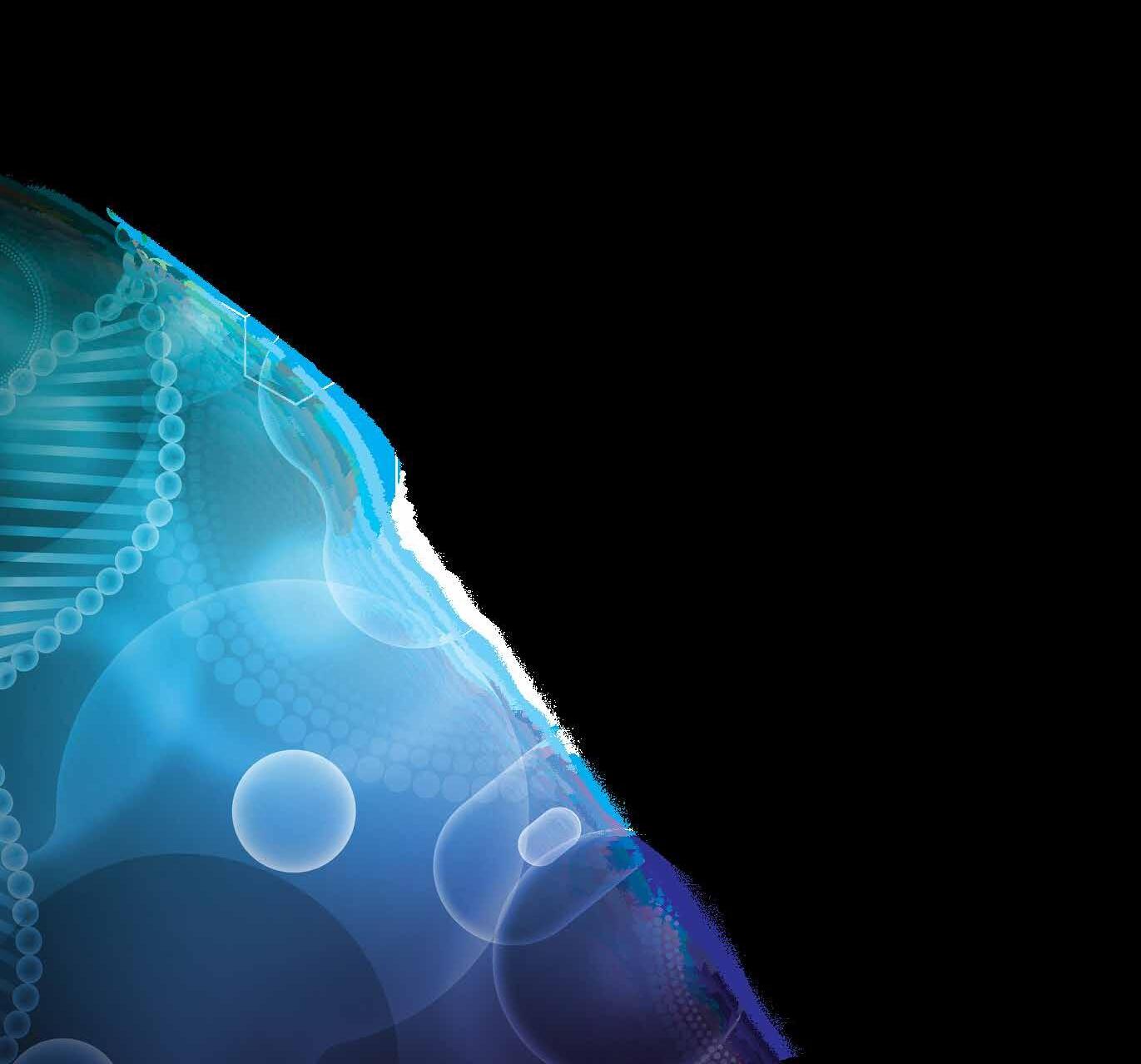

Scan here to listen to Mainz’s interview on Salk’s podcast,
at salk.edu/podcast Taking control after a cancer diagnosis 34 INSIDE SALK SPRING 2024 WWW.SALK.EDU
Beyond Lab Walls,
Laura Mainz grew up in a tiny village in midwestern Germany, with just as many cows as people. But the sweeping landscape speckled with farms never swayed her toward plant biology—instead, her interest in the human body grew.
Once she entered high school, two paths presented themselves in the form of two internships: medicine and research. After spending time in a hospital and in a pharmaceutical company, Mainz decided on research and began planning her undergraduate studies in biology.
Newly enrolled at the Julius Maximilians University of Würzburg, Germany, Mainz took an immediate liking to cancer biology and, a bit later, the related process of cellular recycling, called autophagy.
“Looking back, I think my father being diagnosed with multiple myeloma, a very rare and non-curable bone marrow cancer, when I was in high school is what made me so interested in the topics of cancer and cell death,” recalls Mainz. “When we got the diagnosis, I felt so helpless and confused, I went on Wikipedia for information and remember seeing these dismal statistics—an average survival rate of five years. Studying cancer became my way of coping, of taking control of an otherwise out-of-control situation.”
Mainz’s father went on to exceed Wikipedia’s survival rate predictions, fighting for nine years rather than the predicted five. Meanwhile, Mainz continued to work toward understanding the fundamental drivers of cancer with the goal of preventing the disease altogether.
After earning her PhD, Mainz felt ready to go abroad to continue her research. Having followed the Salk Institute since her undergraduate days, she set her sights on the lab of Professor and CSO Jan Karlseder for her postdoctoral research.
Researchers in Karlseder’s lab focus on understanding telomeres, the protective endcaps on DNA strands that shorten as we age and, in turn, initiate a cascade of signals that control cell behaviors like preventing healthy cells from becoming cancerous. In these aging cells, Mainz looks at a process called replicative crisis, where the body promotes inflammation and widespread cell death (mediated by autophagy) to kill off aged or unstable cells and prevent them from becoming cancerous.
“My main question is whether cell death during replicative crisis is really the last barrier to prevent tumor formation,” says Mainz. “Perhaps there is another barrier between the transformation of a healthy cell to a cancer cell. That idea
LAURA MAINZ

I want fewer people to hear the words, ‘You have cancer.’ [...] Instead of focusing on treatment after diagnosis, I would like to understand how to prevent cancer in the first place.”
that we could prevent cancer from developing altogether— that’s what drives my research.”
To study replicative crisis, Mainz developed a sophisticated mouse model to pinpoint where, when, and how replicative crisis can go wrong and lead to the formation of cancerous cells. Her model has both shortened telomeres and an inability to perform autophagy, so Mainz can examine how long it takes tumors to arise and where in the body they typically appear.
“We want to find where in the body cancer is most likely to begin, and then find the exact last point those cells were healthy,” says Mainz. “If we know which cells are most at risk and at what point they become cancerous, we can then work to target those cells and prevent them from reaching that point.”
When not in the lab, Mainz volunteers in community outreach and advocacy for the Leukemia & Lymphoma Society, a nationwide nonprofit organization supporting blood cancer patients and their families by offering free resources and financial aid, as well as funding related research.
“Until I started at the Leukemia Lymphoma Society, I never expected myself to enjoy community outreach and advocacy,” says Mainz. “But I enjoy those face-to-face interactions so much that I can see myself pursuing a position in clinical trial research in the future.”
When she’s not busy in the lab or volunteering, Mainz tries to keep her mind off her science. She’ll take off on a long run, adventure with friends and family in the outdoors, or participate in one of the many dance genres she’s dabbled in since starting ballet at age seven—jazz, hip-hop, modern, salsa, bachata—the list goes on.
While it can be difficult to spend so much time thinking about a weighty topic like cancer, Mainz motivates herself by remembering the day of her father’s diagnosis.
“I want fewer people to hear the words, ‘You have cancer,’” says Mainz. “It wasn’t even my diagnosis, but hearing those words about a loved one sitting by your side—it has a huge impact on your life. Instead of focusing on treatment after diagnosis, I would like to understand how to prevent cancer in the first place.”
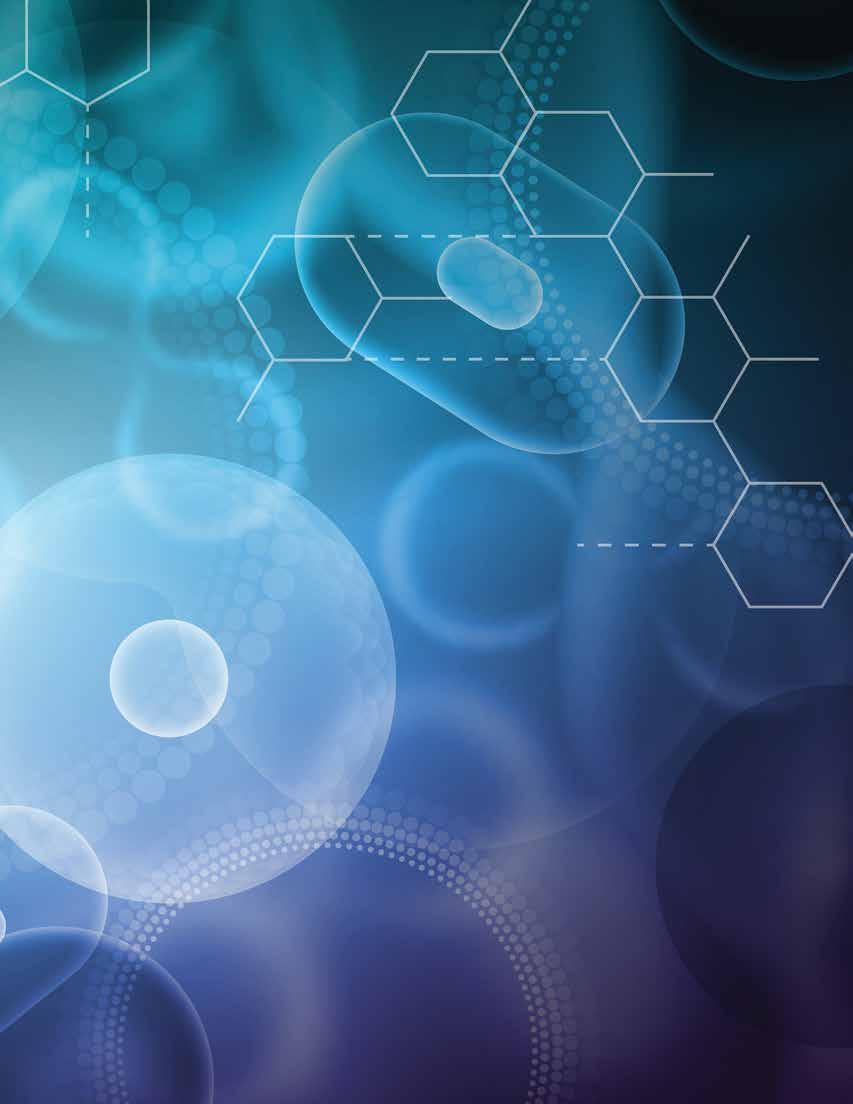

35 INSIDE SALK SPRING 2024 WWW.SALK.EDU

BLACK ASSOCIATION AFFINITY GROUP cultivates welcoming environment BELONGING
The Black Association at Salk (BAS) was one of the first affinity groups formed at Salk in 2020. Since that time, it has established itself as a welcoming space and go-to for resources for all Black Salk community members. Additionally, it has provided professional development and educational opportunities to the entire Salk community, contributing greatly to the Institute’s scientific goals.
36 INSIDE SALK SPRING 2024 WWW.SALK.EDU
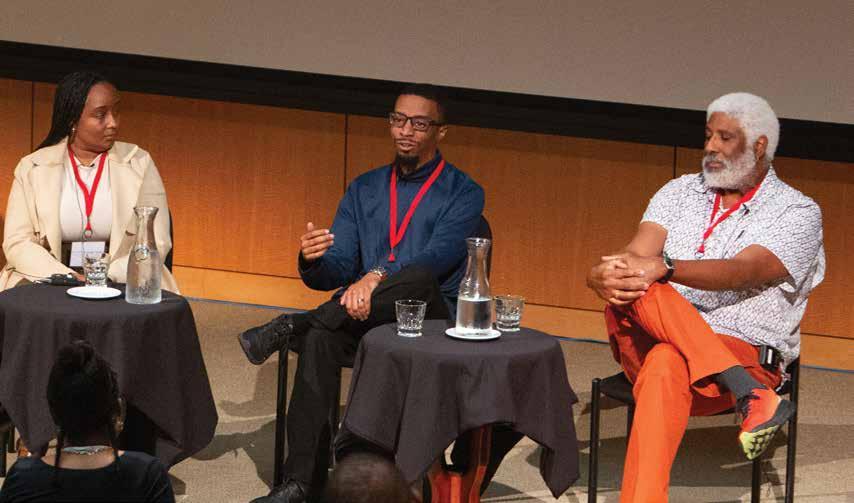
“We are honored to give the Black members of our community a place to come together and celebrate Black excellence,” says Jasmin Revanna, a graduate student in Professor Rusty Gage’s lab and co-chair of BAS. “We also make it a point to emphasize that this group is open for allies and non-Black individuals. It is so crucial to have these supporters help with our events and to help recruit diverse candidates to Salk.”
The group is proactive in holding mixers and celebrations, as well as sponsoring lectures and events on campus.
For the second year in a row, BAS hosted a Black in STEM panel discussion and Q&A at the Salk Institute. The event, held on February 28, featured three outstanding scientists from three different fields (neuroscience, plant biology, and marine biology). The panelists, Charisse Nicole Winston, Kevin Cox, and Eric Archer, discussed their research, as well as their efforts to raise awareness and broaden opportunities for mentorship, professional development, and academic support. The panel was held as part of the celebration of Black History Month, and was moderated by Austin Coley, Salk postdoctoral researcher in Professor Kay Tye’s lab, co-chair of BAS, and incoming assistant professor at UCLA.
“We were so thrilled to host the Black in STEM panel again this year,” Revanna says. BAS received so much interest for last year’s event from neighboring institutions and even from some across the country, that it prompted the group to extend invitations to those institutions to join this year’s discussion in person or online. “We hope this is an event that will continue for years to come.”
“Black in STEM events are critical for highlighting the success of Black scientists and providing a network for all of us to tap into to find these spectacular candidates to visit our institutions.”
JASMIN REVANNA
BAS has future events planned for 2024— including a Juneteenth celebration—all with the aim of cultivating a culture of belonging.
“We want to make sure we are creating a welcoming environment for anyone that joins Salk so they feel represented here,” Revanna says.
37 INSIDE SALK SPRING 2024 WWW.SALK.EDU
From left: Charisse Nicole Winston, Kevin Cox, and Eric Archer.
SPOTLIGHT

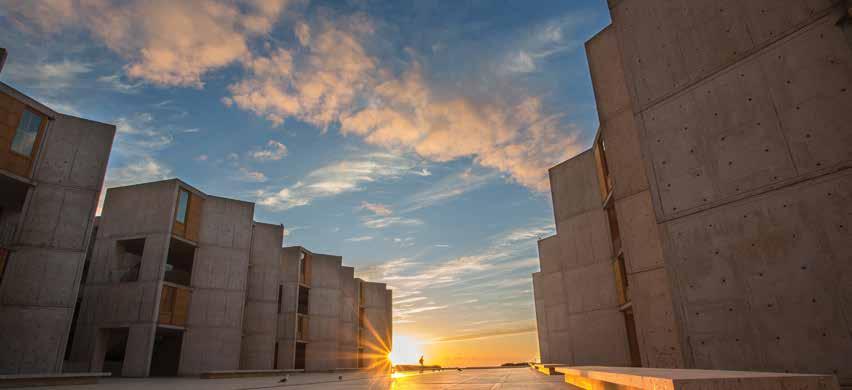
Salk Institute receives Charity Navigator’s highest rating for twelfth consecutive time
For the twelfth consecutive time, the Salk Institute has earned the highest ranking—4 out of 4 stars—from Charity Navigator, America’s largest independent charity and nonprofit evaluator. The coveted ranking indicates the Salk Institute has demonstrated strong financial health and commitment to accountability and transparency, outperforming most other charities in the United States with respect to executing best fiscal practices and carrying out its mission in a financially efficient way.
Charity Navigator’s data-driven analysis of US charities provides philanthropists with a way to recognize nonprofits that provide greater accountability, transparency, and concrete results. Only 25 percent of organizations evaluated by Charity Navigator receive the 4 star rating.
“We are honored to receive this highly regarded distinction and send our thanks to Charity Navigator for its unbiased
assessment of the Salk Institute,” says Bryan Robinson, Salk’s vice president of External Relations. “What this means is that our supporters can be confident that their generosity truly drives our pursuit of highimpact science.”
Since receiving its previous 4 star rating from Charity Navigator in 2022, Salk’s philanthropy team has further bolstered its commitment to donors, adding positions dedicated to faculty relations, community engagement, stewardship, and fundraising to enhance diversity, equity, and inclusion.
These commitments coincide with Salk’s seven-year, $750 million Campaign for Discovery: The Power of Science—an effort to attract the people and build the technology and space necessary for innovation in six critical areas: healthy aging, cancer, plant biology, computational biology, neuroscience, and immunobiology.
“We are delighted to provide the Salk Institute with third-party accreditation that validates their operational excellence,” says Michael Thatcher, president and CEO of Charity Navigator. “The 4 star rating is the highest possible rating an organization can achieve. We are eager to see the good work that Salk is able to accomplish in the years ahead.”
38 INSIDE SALK SPRING 2024 WWW.SALK.EDU





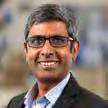
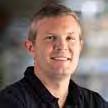

Salk Institute Professor Ronald Evans honored with Japan Prize
Professor Ronald Evans was named the 2024 recipient of the Japan Prize in the field of Medical Science and Pharmaceutical Science. The Japan Prize Foundation awards this prestigious international award annually to “express Japan’s gratitude to international society.”
Evans is a professor, the director of the Gene Expression Laboratory, and holder of the March of Dimes Chair in Molecular and Developmental Biology at Salk. His receipt of the Japan Prize recognizes his groundbreaking discovery of nuclear hormone receptors—a large family of molecules that respond to various steroid hormones, vitamin A, and thyroid hormones. These hormones help control sugar, salt, calcium, and fat metabolism, affecting our daily health, as well as treatment of disease. The receptors Evans discovered are now primary targets in the treatment of breast cancer, prostate cancer, pancreatic cancer, and leukemia, as well as osteoporosis and asthma, and more than a dozen approved drugs have been developed using his technology to treat those conditions and more.
Seven Salk scientists named among best and most highly cited researchers in the world
Salk Professors Joseph Ecker, Ronald Evans, Satchin Panda, Rusty Gage, and Kay Tye, as well as Assistant Professor Jesse Dixon and Research Assistant Joseph Nery, were named to the Highly Cited Researchers list by Clarivate. The 2023 list includes 6,849 researchers from 67 countries, all of whom demonstrate “significant and broad influence reflected in their publication of multiple highly cited papers over the last decade.”

The Japan Prize Foundation honors individuals whose original and outstanding achievements in science and technology have advanced the frontiers of knowledge and served the cause of peace and prosperity for humankind. To date, 108 laureates from 14 countries have received the Japan Prize since the first prize was given in 1985. Each laureate receives a certificate of merit, a commemorative medal, and a monetary prize.
Evans has received such accolades as the Albert Lasker Basic Medical Research Award, the Gairdner Foundation International Award, the Wolf Prize in Medicine, the Keio Medical Science Prize, the Asan Award in Basic Medicine, and the NOMIS Distinguished Scientist and Scholar Award, among many others. He is a member of the U.S. National Academy of Sciences and the U.S. National Academy of Medicine.
JOSEPH ECKER
RUSTY GAGE
JOSEPH NERY
RONALD EVANS
RONALD EVANS
KAY TYE
SATCHIN PANDA
JESSE DIXON
39 INSIDE SALK SPRING 2024 WWW.SALK.EDU

Salk researchers earn $1.3 million W. M. Keck Foundation award to study aging brain
Professor Rusty Gage and Assistant Professor Pallav Kosuri were awarded $1.3 million by the W. M. Keck Foundation to fund a novel investigation into the way brain and heart cell functions decline over time due to ribosubstitution events—cellular repair of DNA damage with RNA building blocks rather than DNA building blocks. The award combines the biological discovery of ribosubstitution made by Senior Research Associate Jeff Jones in Gage’s lab with the technological advancements established by Postdoctoral Researcher Yuening Liu in Kosuri’s lab. The W. M. Keck Foundation was established with the goal of generating far-reaching benefits for humanity by supporting outstanding science, engineering, and medical research.
“The imbalance between RNA and DNA in neurons and cardiomyocytes increases the likelihood of ribosubstitution events that weaken the integrity of DNA and that—we think—could be causing some of the irreversible damage we see accrue over time in the heart and the brain.”
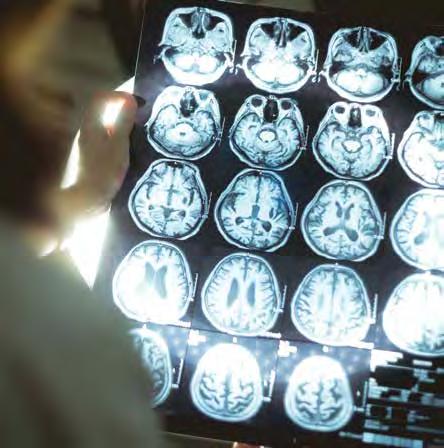
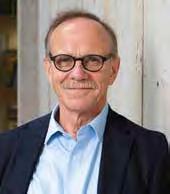
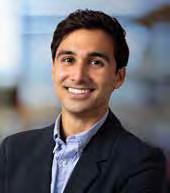


SPOTLIGHT
PALLAV KOSURI
RUSTY GAGE
JEFF JONES
YUENING LIU 40 INSIDE SALK SPRING 2024 WWW.SALK.EDU
PALLAV KOSURI

Salk Institute’s Terrence Sejnowski named Scientist of the Year by ARCS San Diego
The ARCS (Achievement Rewards for College Students) San Diego chapter honored Terrence Sejnowski for his pioneering research in neural networks and computational neuroscience.
Sejnowski, who is head of Salk’s Computational Neurobiology Laboratory, holder of the Frances Crick Chair, and a distinguished professor at UC San Diego, has helped shape the fields of neuroeconomics, neuroanatomy, neurophysiology, psychology, and artificial intelligence.
Each year, an ARCS committee of multiple members and the foundation’s president, aided by the advice of former honorees and scientific advisors in the community, makes a recommendation to its membership for the Scientist of the Year award. ARCS voted unanimously for Sejnowski to be its 2024 honoree.
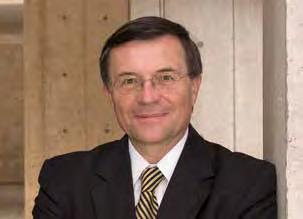
“It is a singular honor to be chosen by ARCS as the Scientist of the Year, which also honors the remarkable computational advances being made by computer scientists and neuroscientists.”
TERRENCE SEJNOWSKI
Salk Institute welcomes San Diego philanthropist Amy Jacobs as new trustee
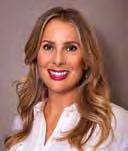
The Salk Institute Board of Trustees has appointed Amy Jacobs as its newest trustee. Jacobs brings to the Institute her experience as a philanthropist with an educational background in science. Since moving to San Diego 13 years ago, she has been active in supporting local Jewish organizations, the Jacobs Cushman San Diego Food Bank, and the San Diego Zoo Wildlife Alliance, as well as housing and homelessness initiatives in San Diego. Additionally, Jacobs is a member of the Pauline Foster Women’s Leadership Institute and a former member of Forward Global (formerly the Philanthropy Workshop). She formally joined the Salk Board in April 2024.
Salk Fellows Program welcomes physicist Adam Bowman
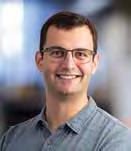
The Salk Institute appointed Adam Bowman to the Salk Fellows Program, where he joined current Salk Fellow Talmo Pereira in March 2024. Bowman is an applied physicist who recently completed his PhD at Stanford University, and develops new technologies for optical microscopy. The Salk Fellows Program brings scientists from broad disciplines to the Institute to encourage innovation and perpetuate the Institute’s collaborative spirit.
ADAM BOWMAN
AMY JACOBS
41 INSIDE SALK SPRING 2024 WWW.SALK.EDU
SATURDAY, AUGUST 17, 2024
This year’s guest artist will be announced soon. Past events have featured stars such as Jennifer Hudson, Josh Groban, Idina Menzel, and Liza Minnelli.
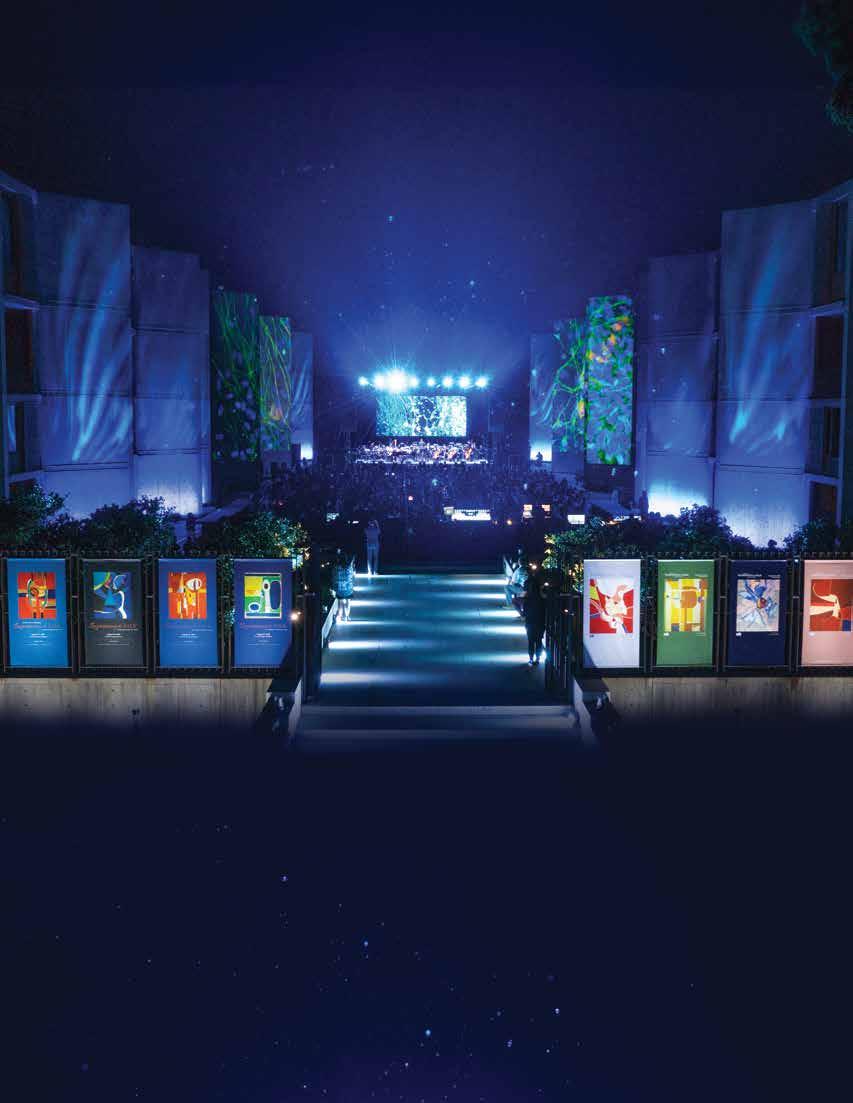
Visit
symphony.salk.edu for more information.
Salk Institute for Biological Studies 10010 N Torrey Pines Rd, La Jolla, California 92037
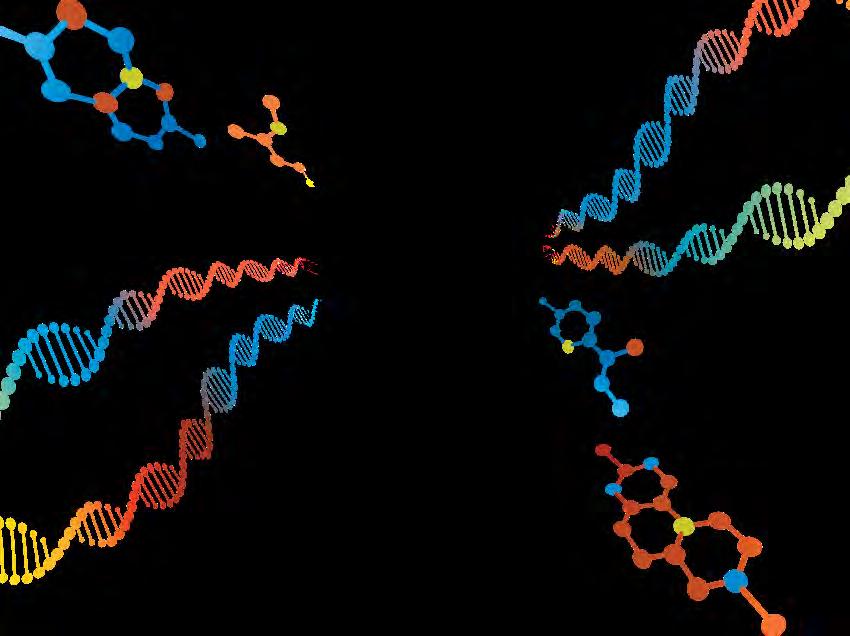
Listen to all-new episodes of Salk’s podcast Beyond Lab Walls
Join hosts Nicole Mlynaryk and Isabella Davis as they take you behind the scenes of the Salk Institute, delving into the captivating realms of cutting-edge neuroscience, plant biology, cancer, aging, and more. Immerse yourself in the fascinating world of science, while getting acquainted with the brilliant minds behind it. Here at Salk, we’re unlocking the secrets of life itself and sharing them beyond lab walls .

Beyond Lab Walls is a production of the Salk Office of Communications, and can be heard on Apple and Google podcasts, Stitcher, Spotify, or anywhere you listen to podcasts.
Scan QR code to visit www.salk.edu/podcast.

The Campaign for Discovery is the Salk Institute’s seven-year, $750 million comprehensive fundraising campaign. The goal is to attract the people and build the technology and space necessary for innovation in six critical areas: cancer, healthy aging, plant biology, immunobiology, neuroscience, and computational biology.
Science is a collaborative pursuit, and we invite you to join us in accelerating life-changing discoveries. Please donate today at www.salk.edu/campaign.

Gerald Joyce President
Bryan Robinson Vice President, External Relations
Heather Buschman Senior Director, Communications
Liz Hincks Senior Director, Graphic and Digital Communications
Amy Cao Science Illustrator
Isabella Davis Science Writer
Alex Endsley Graphic Designer
Stephanie Harada Senior Graphic and Digital Designer
Aaron Howard Manager, AV and Video Communications
Curtis Ippolito Development Writer
Mike Jeffs Multimedia Producer
Chanelle Jimenez Manager, Communications
Victoria Johnson Media Relations Manager
Chris Keeney Photographer
Nicole Mlynaryk Manager, Scientific Communications
Kent Schnoeker Senior AV Technician
Elizabeth Shepkin Marketing Communications Manager
Kara Sjoblom-Bay Communications Administrator
Oliver Yambao Senior Graphic Designer
Visit the Salk Institute at www.salk.edu. Inside Salk is published by the Salk Institute for Biological Studies. Please send comments to communications@ salk.edu or contact the Communications Department at (858) 453-4100 x1371. Inside Salk is printed on recycled paper.
Salk Institute for Biological Studies
10010 N Torrey Pines Rd
La Jolla, California 92037-1002
Telephone: (858) 453-4100 www.salk.edu
THERE ARE MANY WAYS TO SUPPORT SALK.
For detailed information on opportunities, please email giving@salk.edu, call (858) 453-4100 x2068, or visit www.salk.edu/support.
VISIT US ONLINE AT inside.salk.edu.
Salk Institute has received the highest rating 12 consecutive times from Charity Navigator, the nation’s foremost charity evaluator.
Follow us
on:
NONPROFIT ORG. U.S. POSTAGE PAID PERMIT NO. 611 SAN DIEGO, CA @salkinstitute












 From left: Margarita Behrens and Joseph Ecker.
From left: Margarita Behrens and Joseph Ecker.












 From left: Susan Kaech, Karthik Varanasi, Kailash Chandra Mangalhara, and Gerald Shadel.
A mouse melanoma tumor showing blood vessels (red), MHC proteins (blue), and an infiltration of specialized immune cells (green).
From left: Susan Kaech, Karthik Varanasi, Kailash Chandra Mangalhara, and Gerald Shadel.
A mouse melanoma tumor showing blood vessels (red), MHC proteins (blue), and an infiltration of specialized immune cells (green).


































































 Guillemin (far right) with Jean and Catherine Rivier.
Guillemin (far right) with Jean and Catherine Rivier.









































